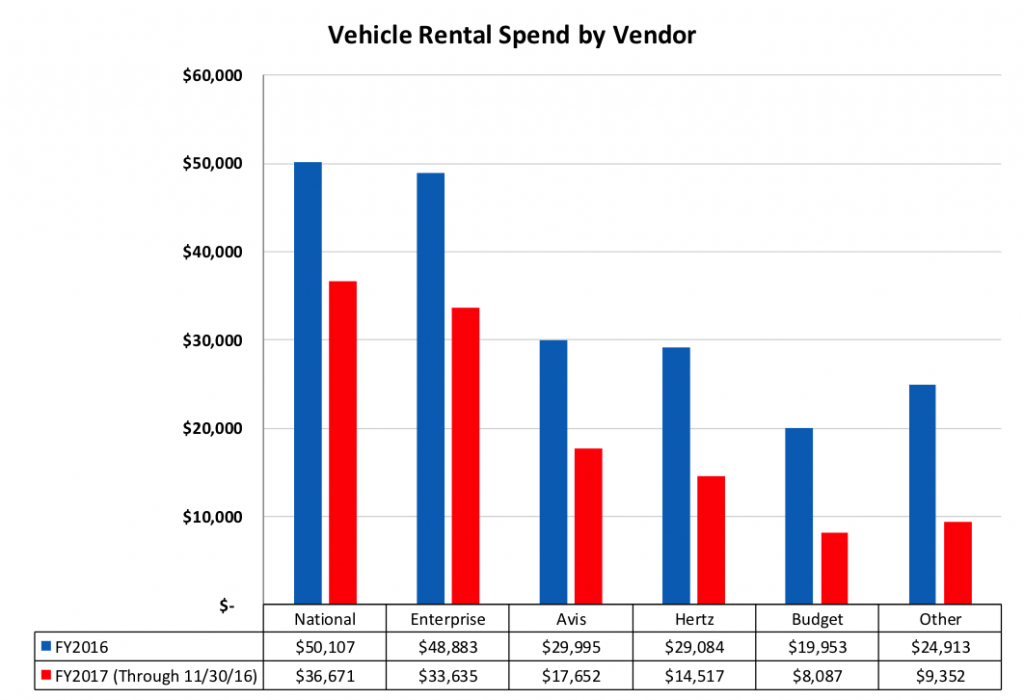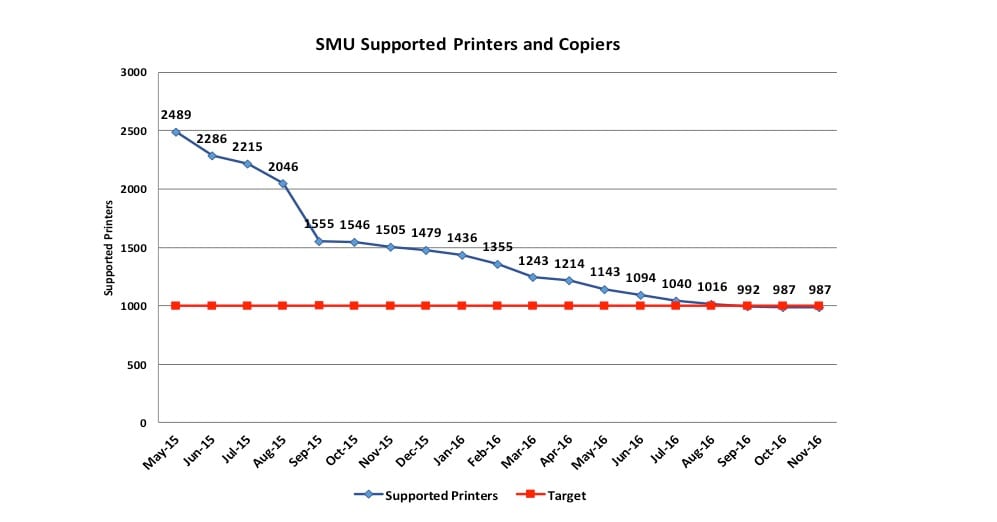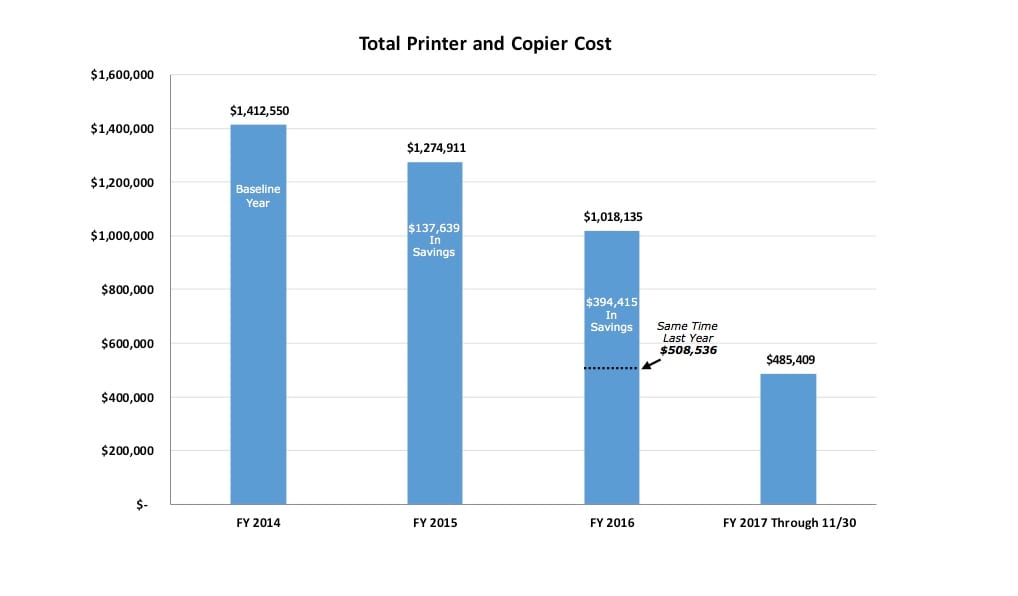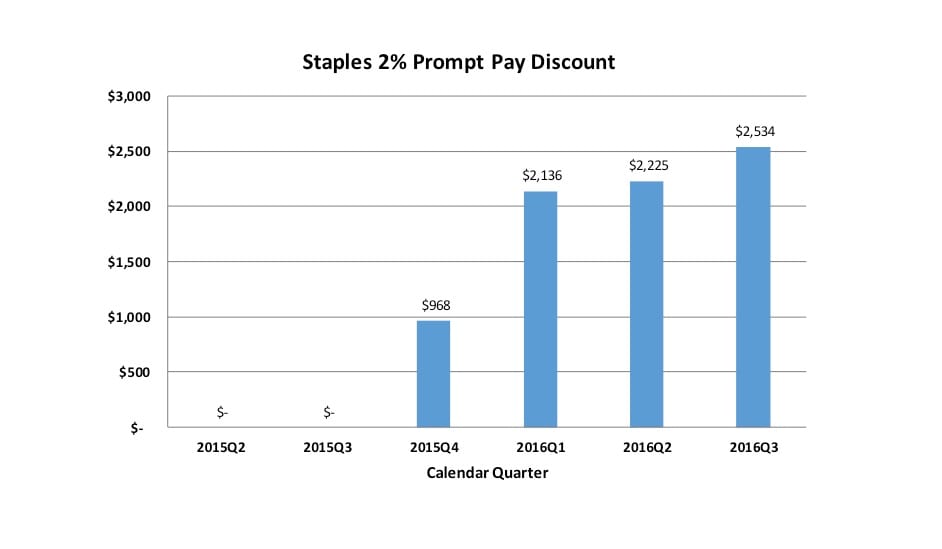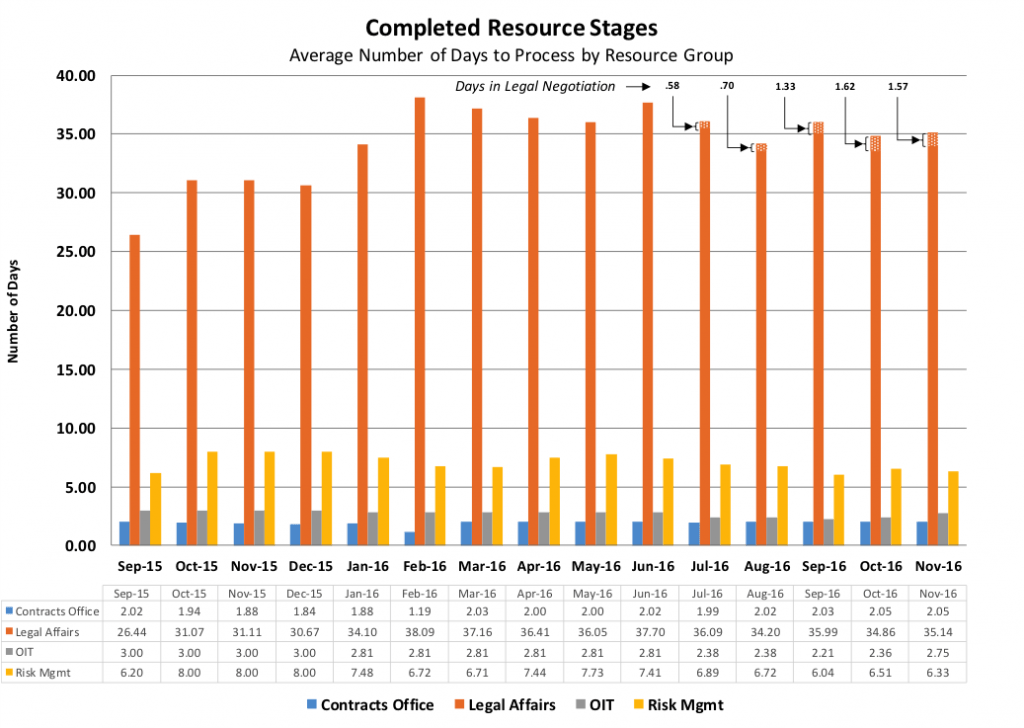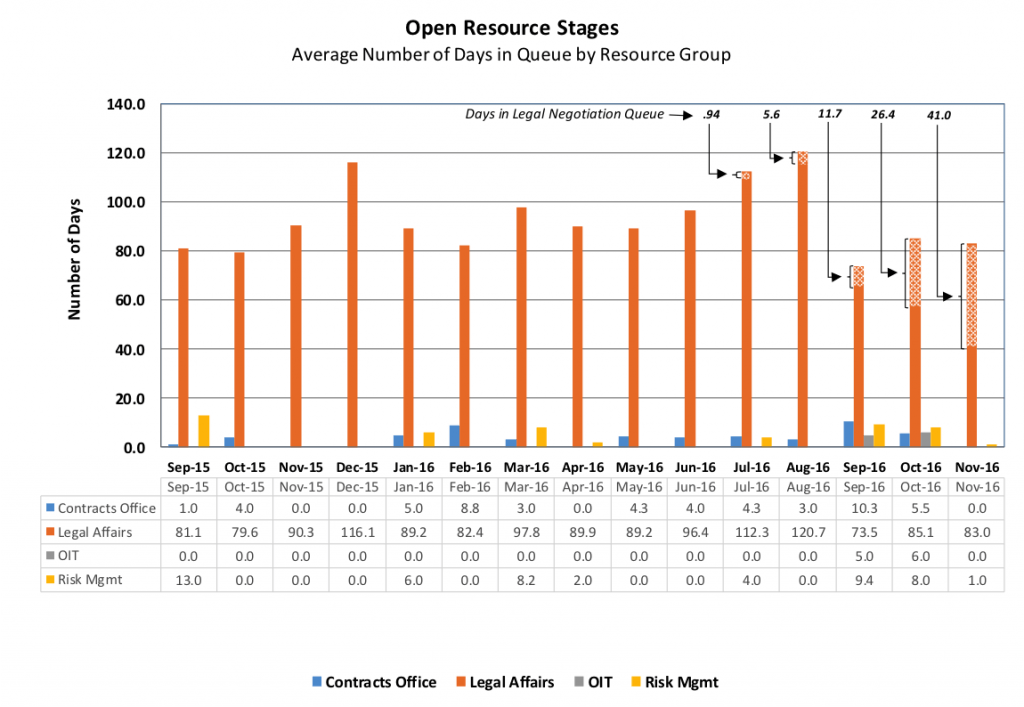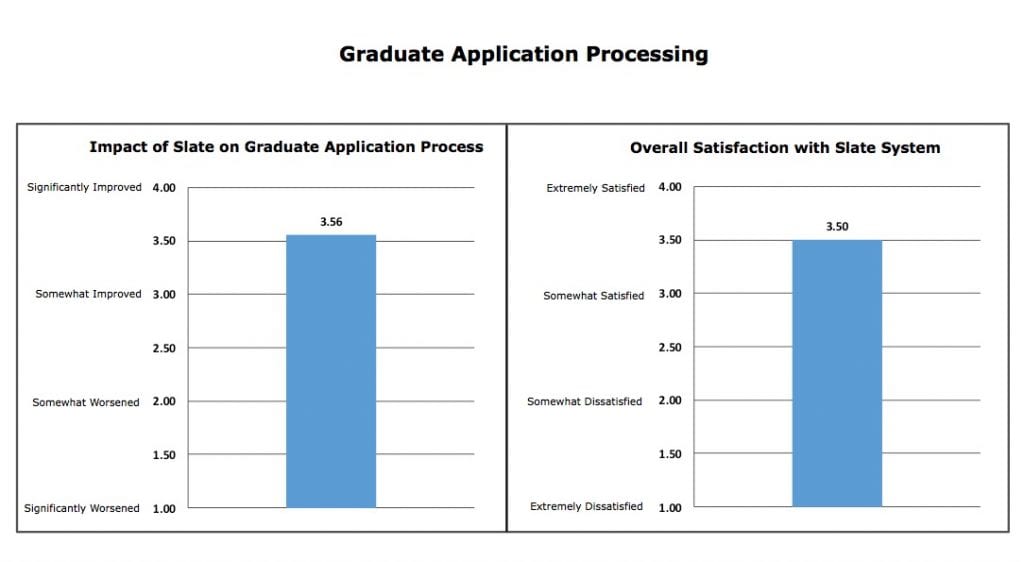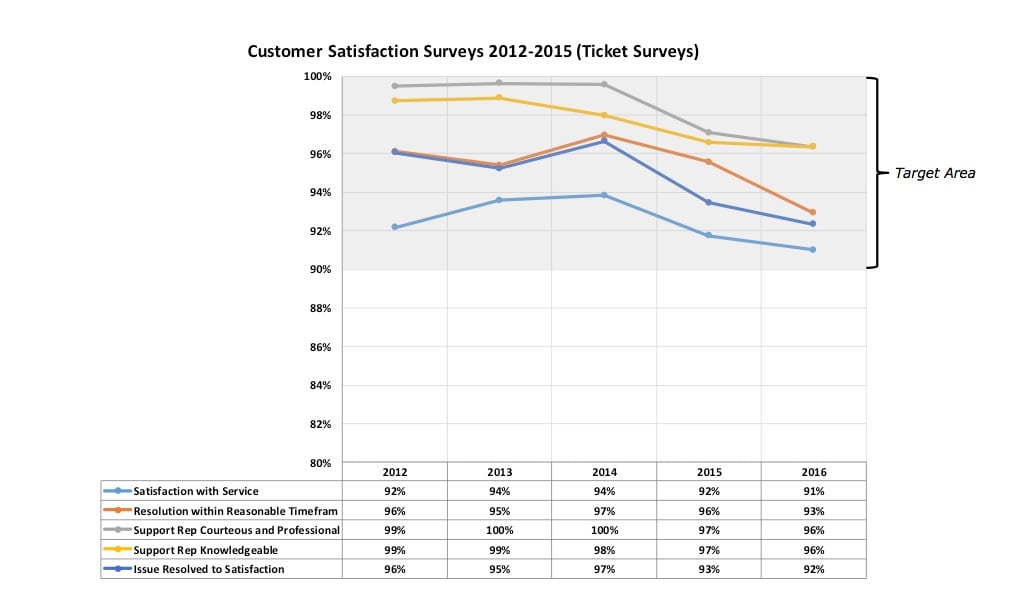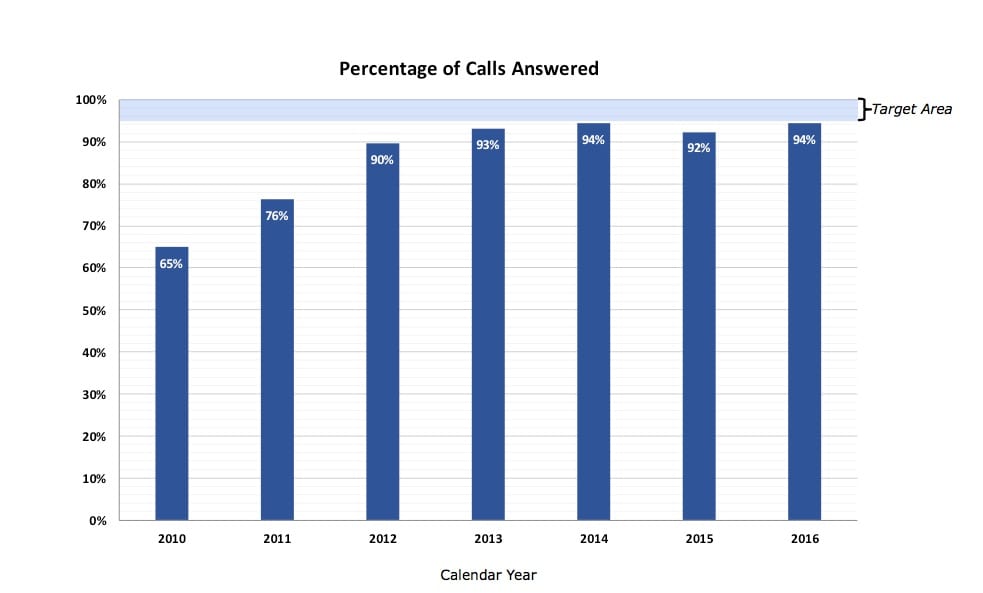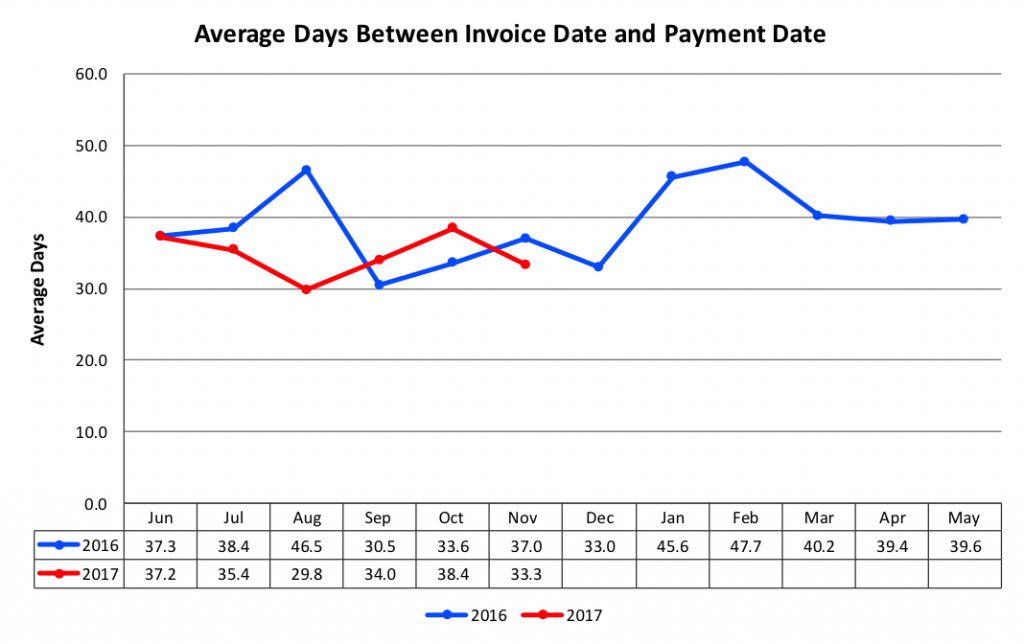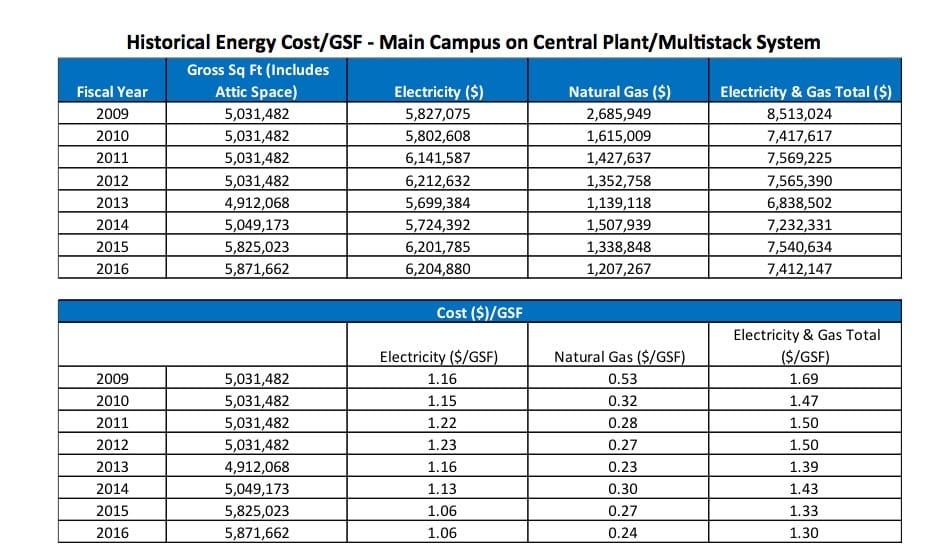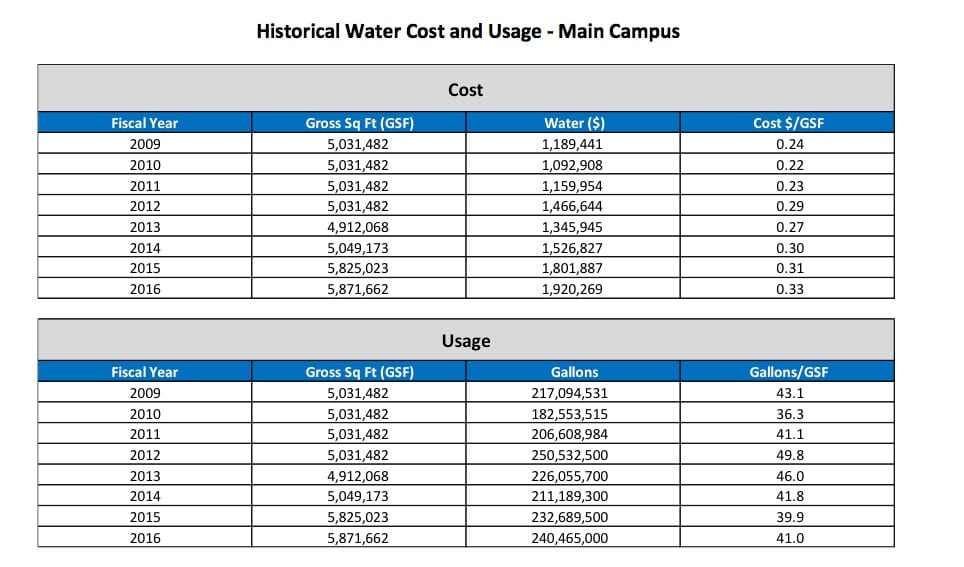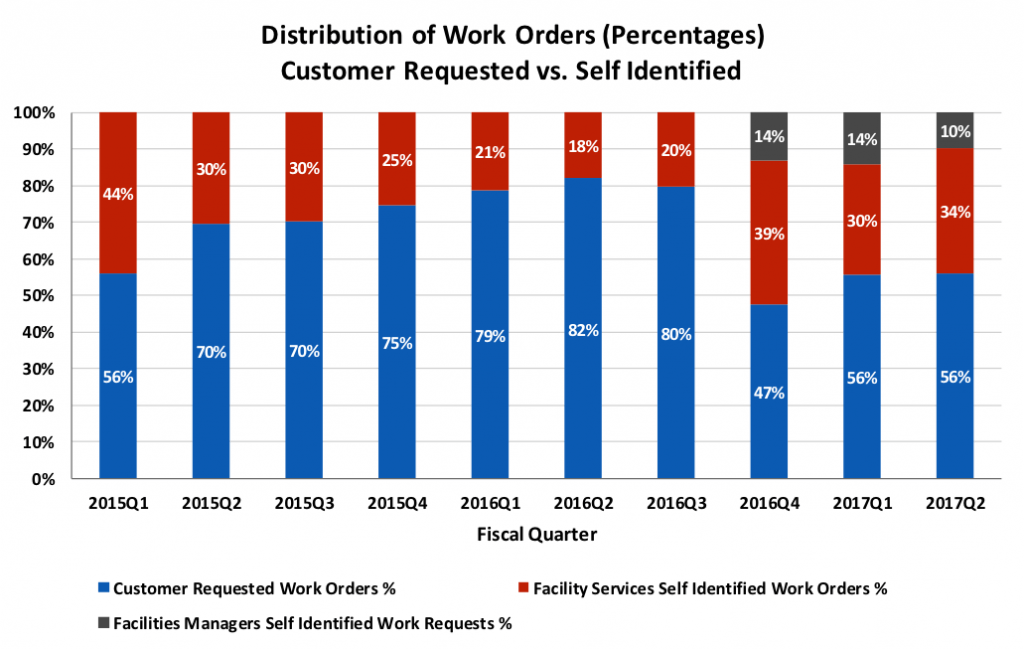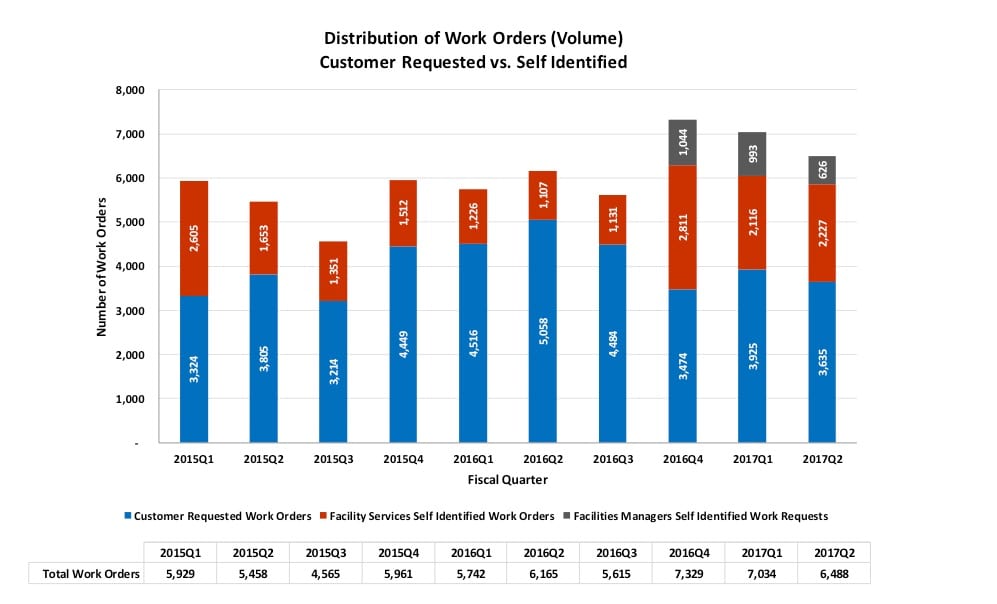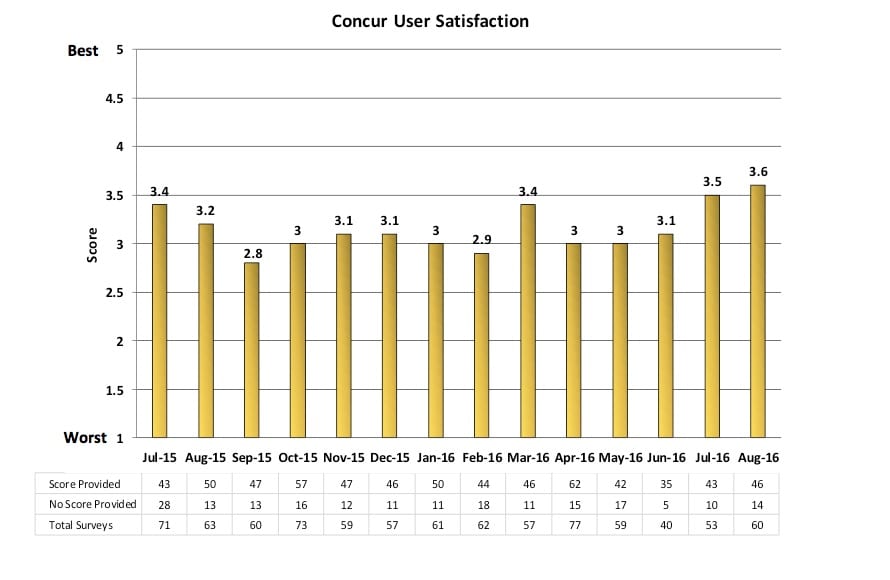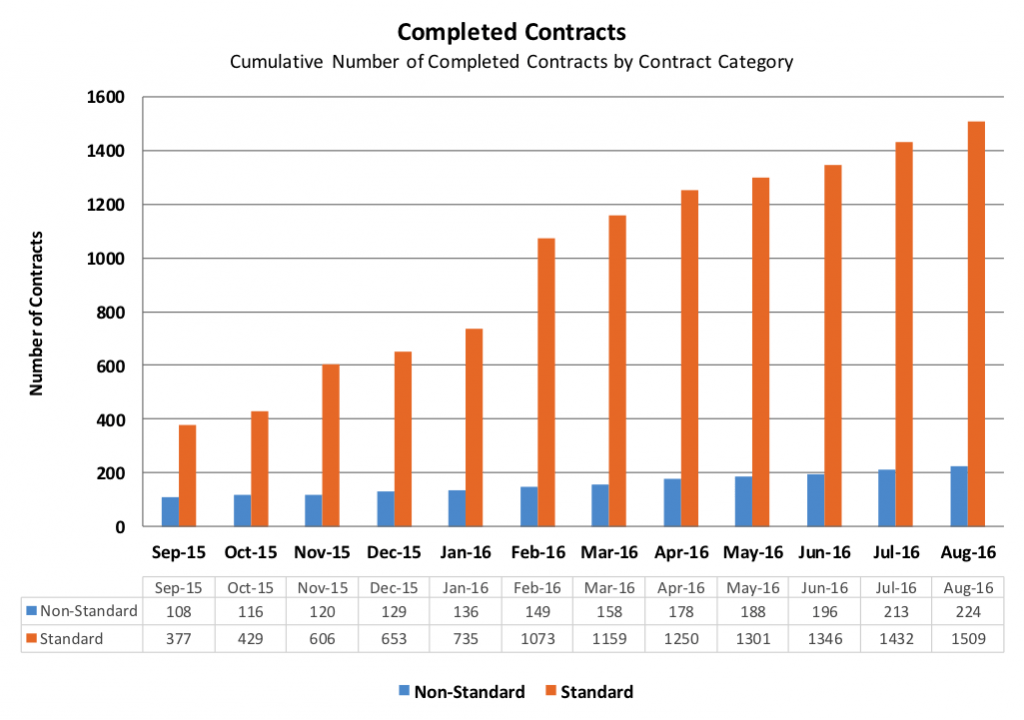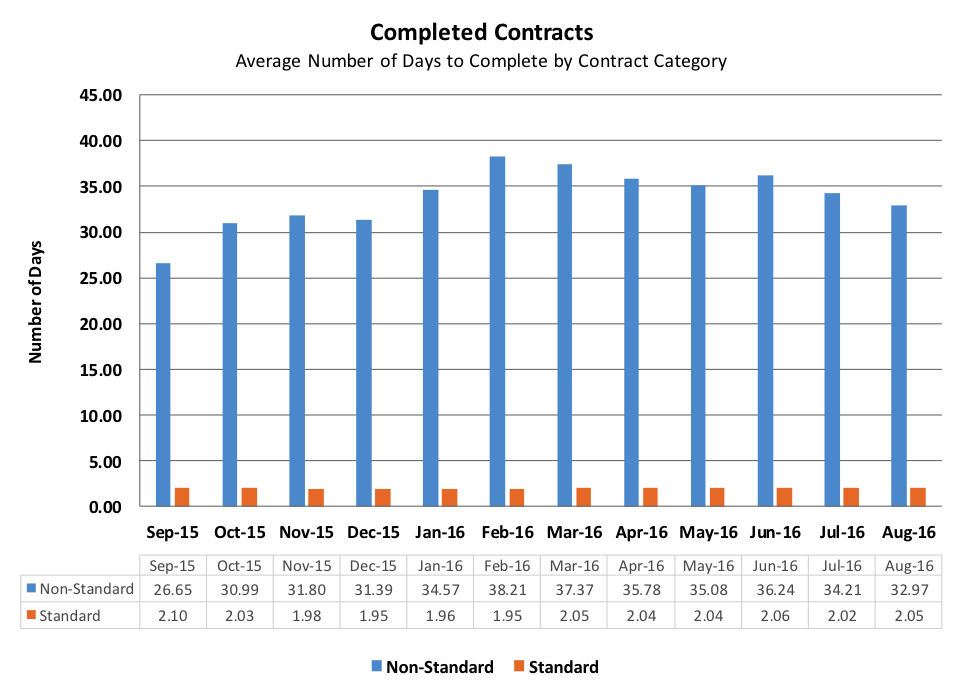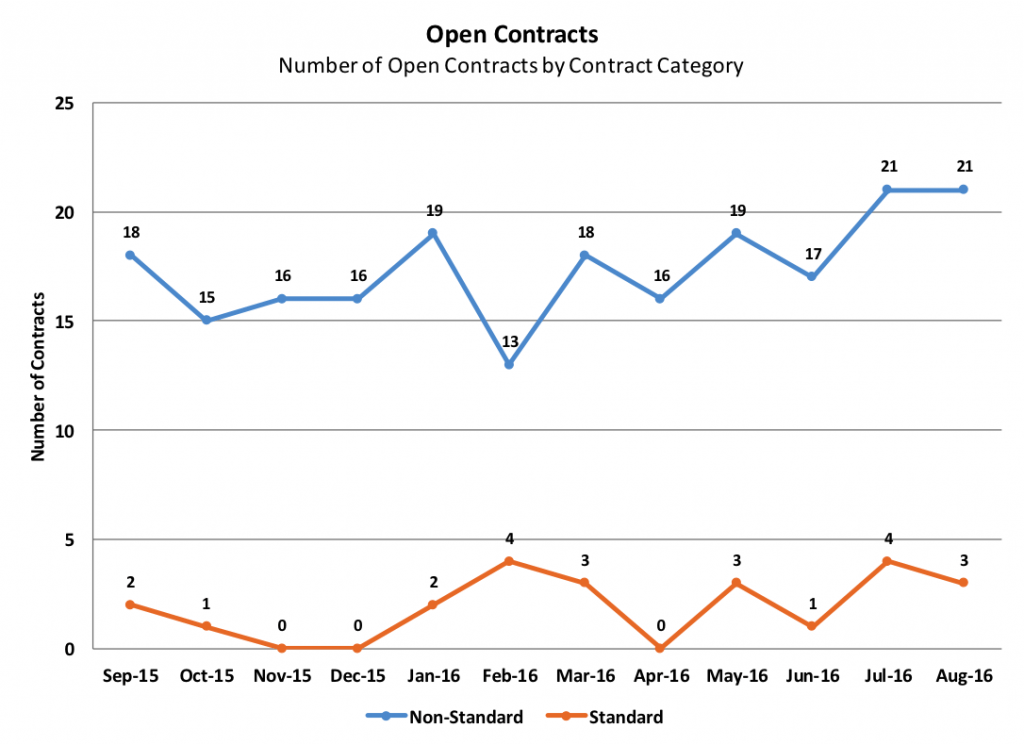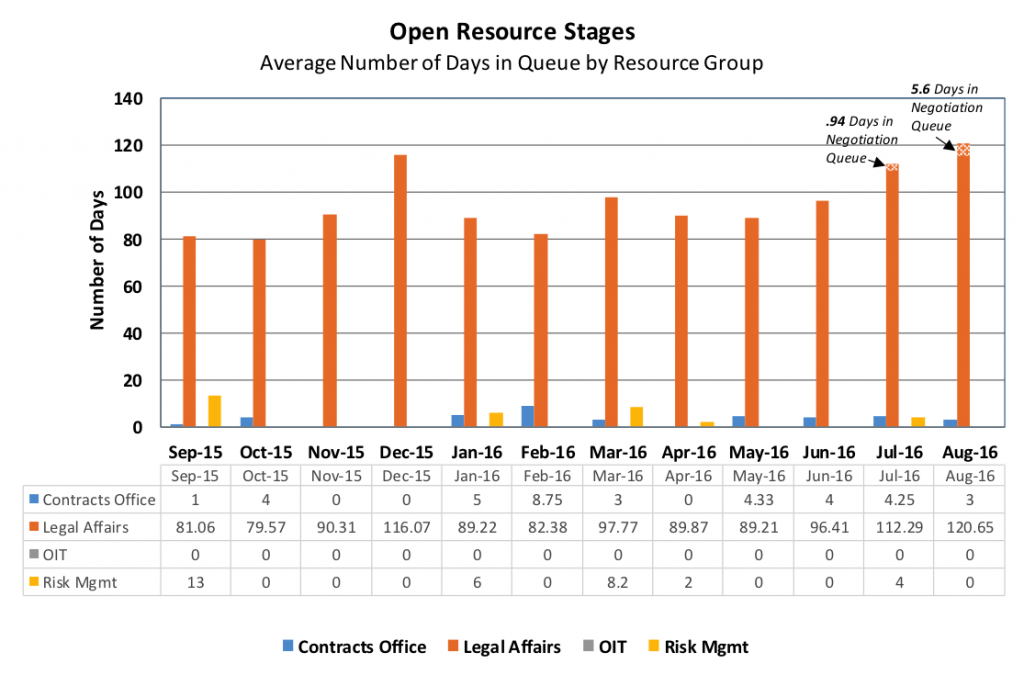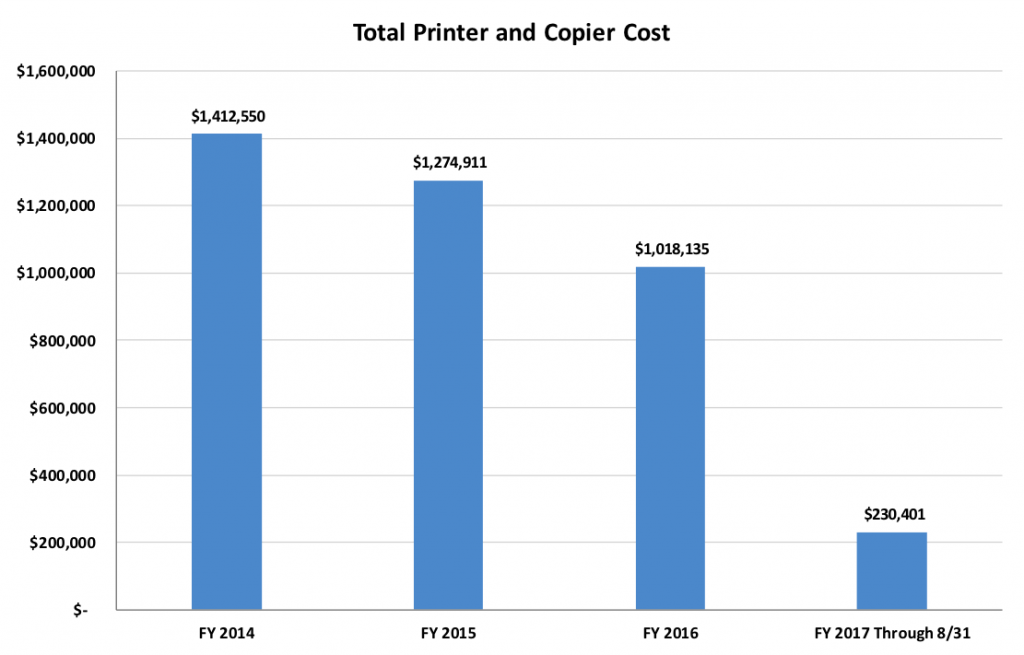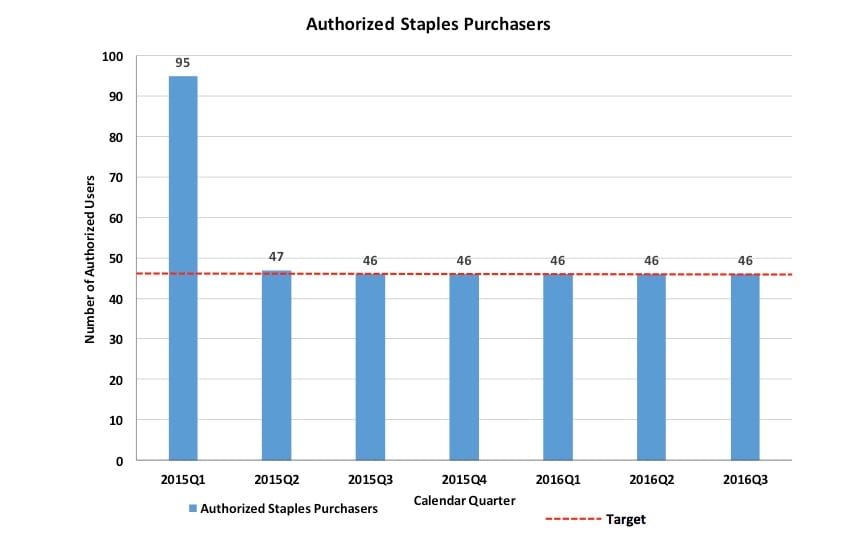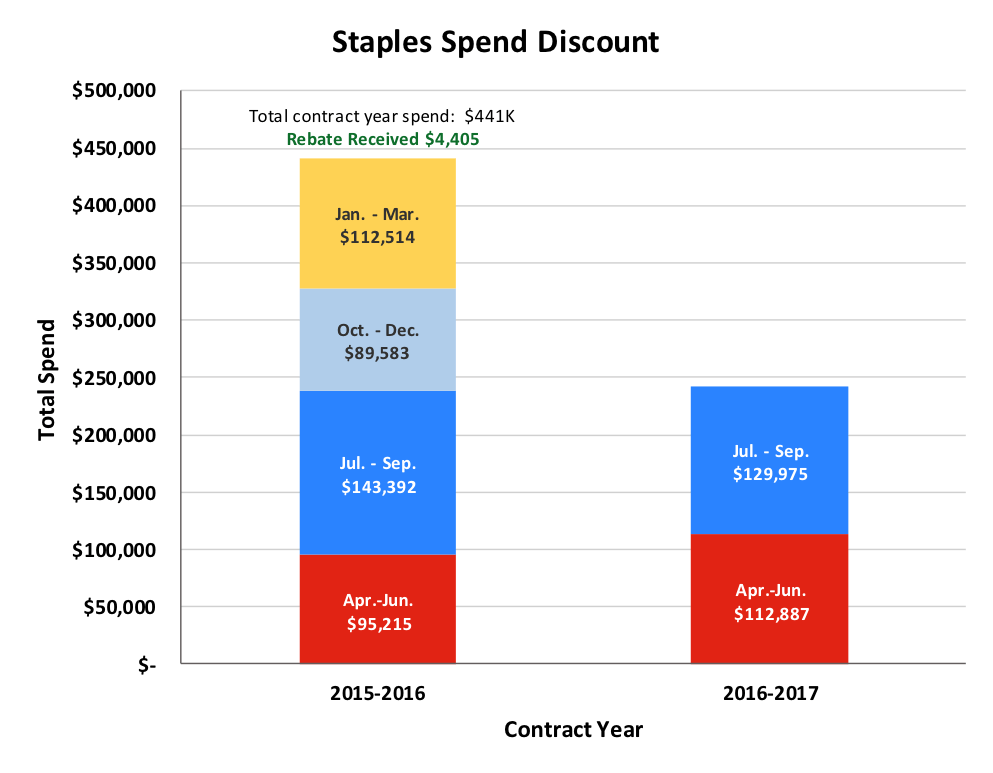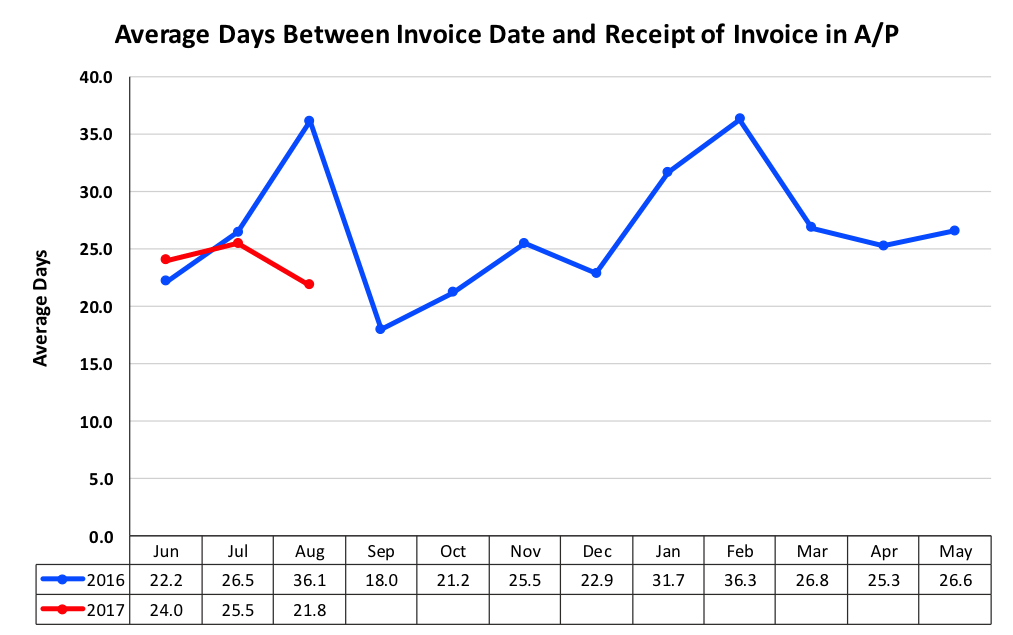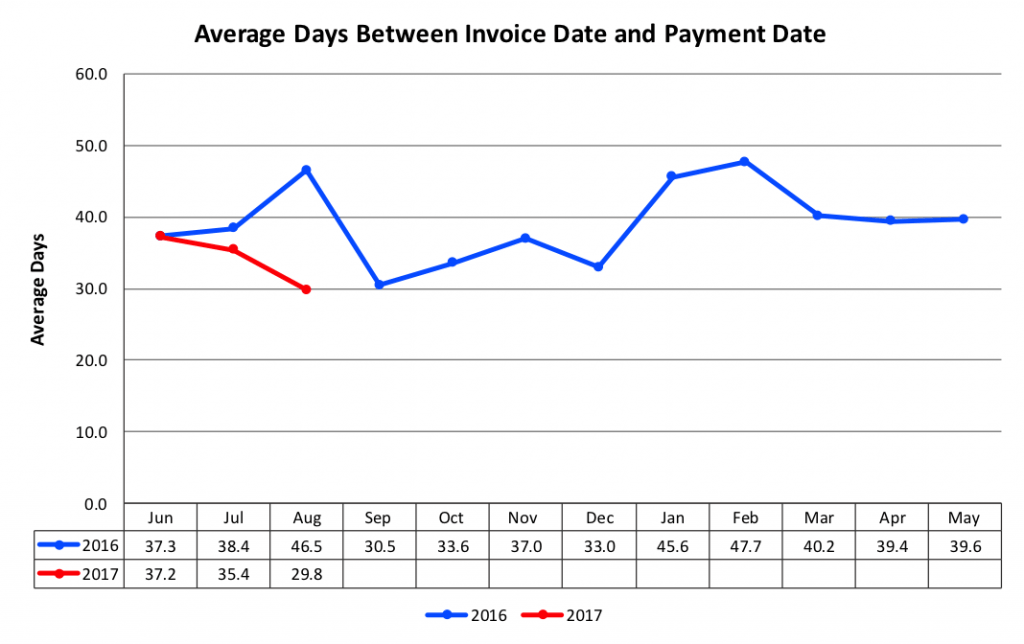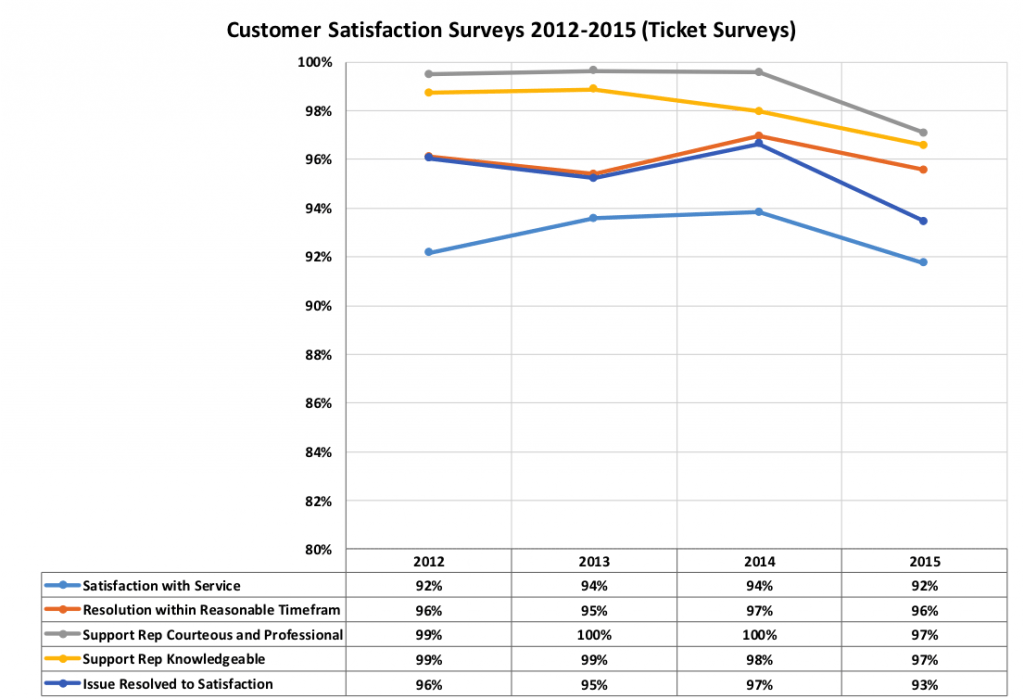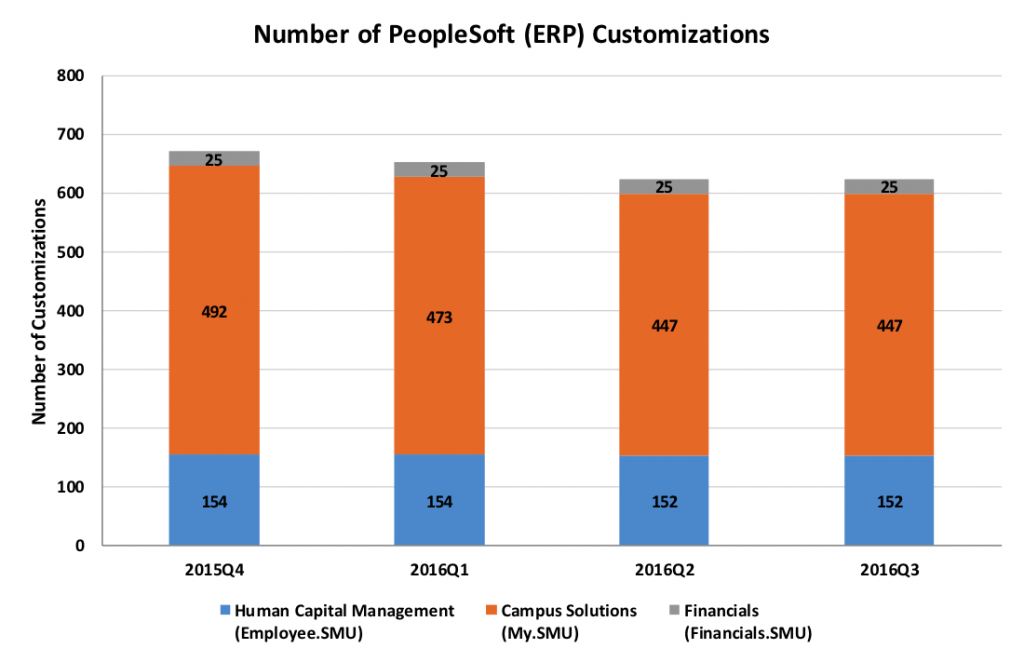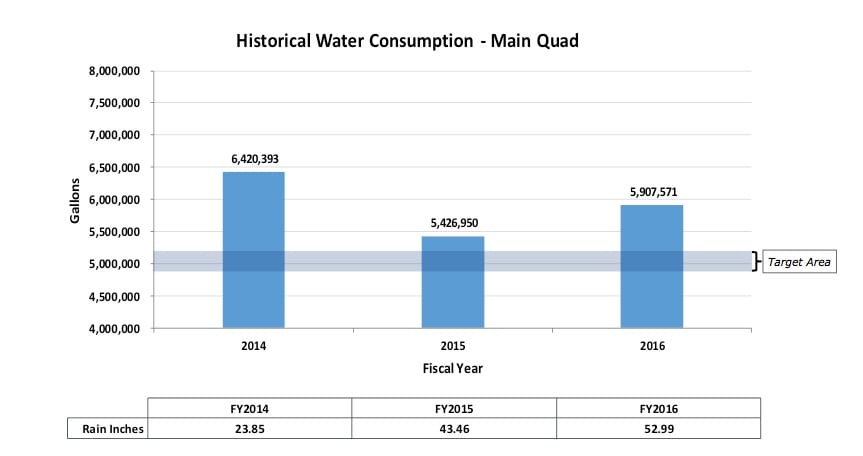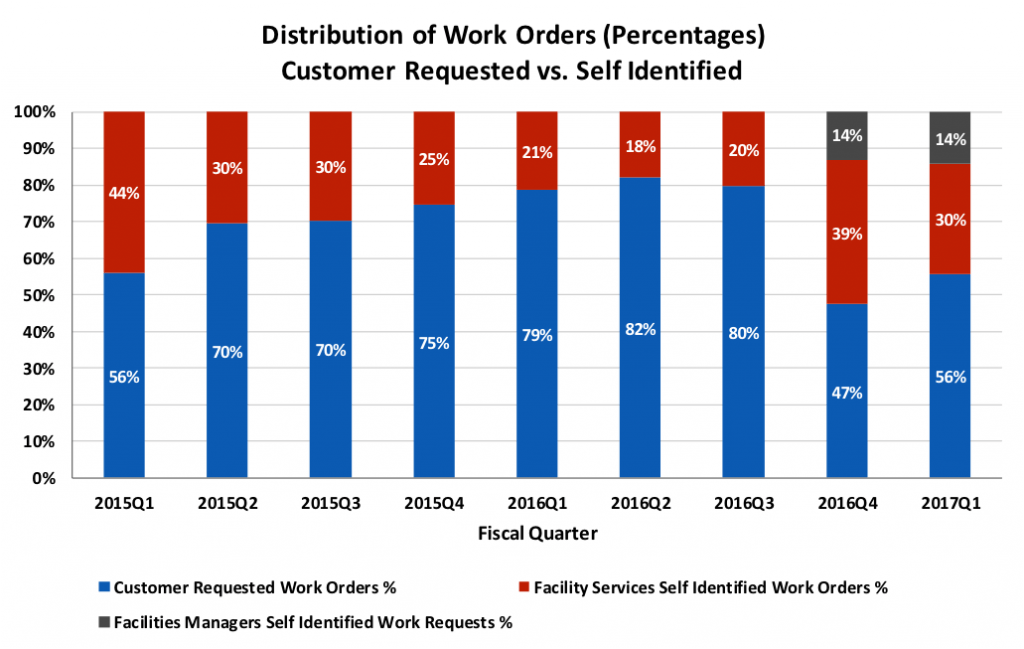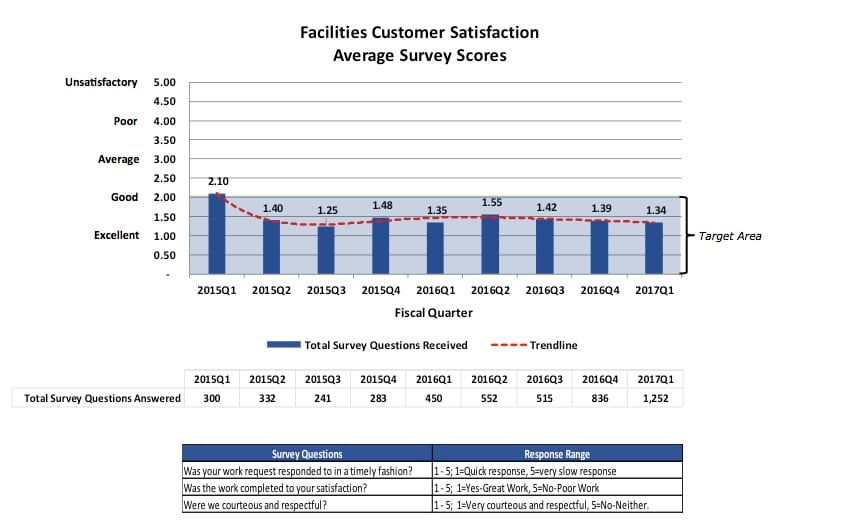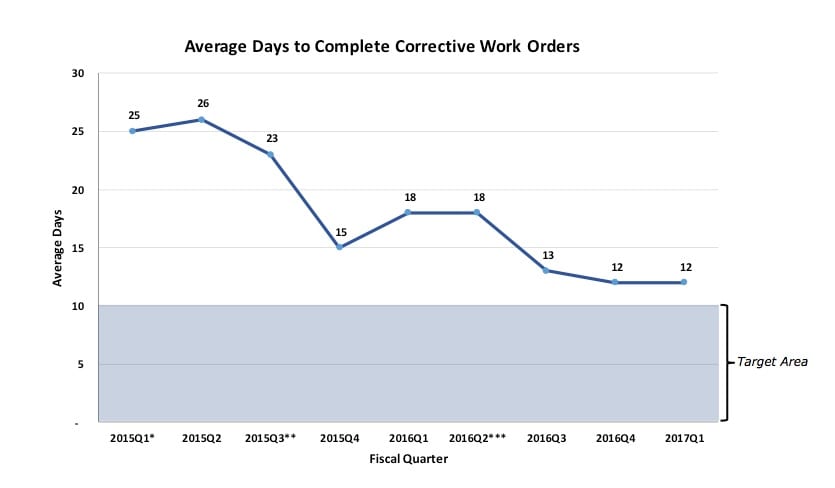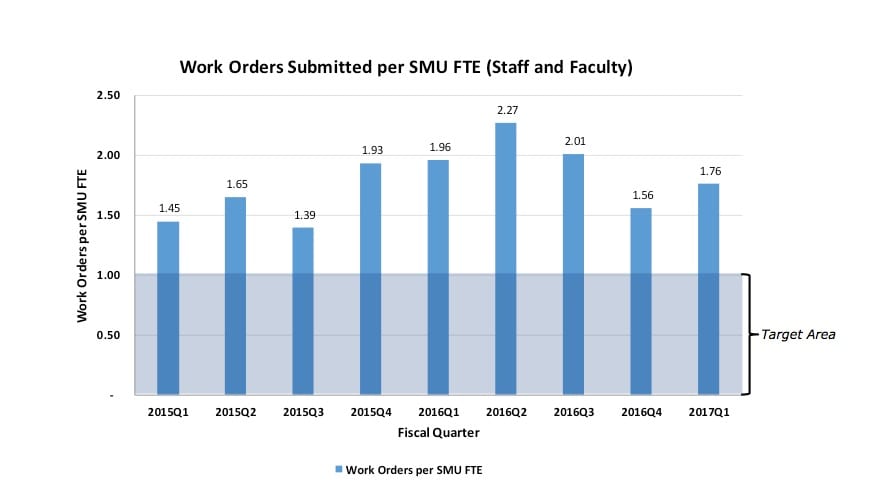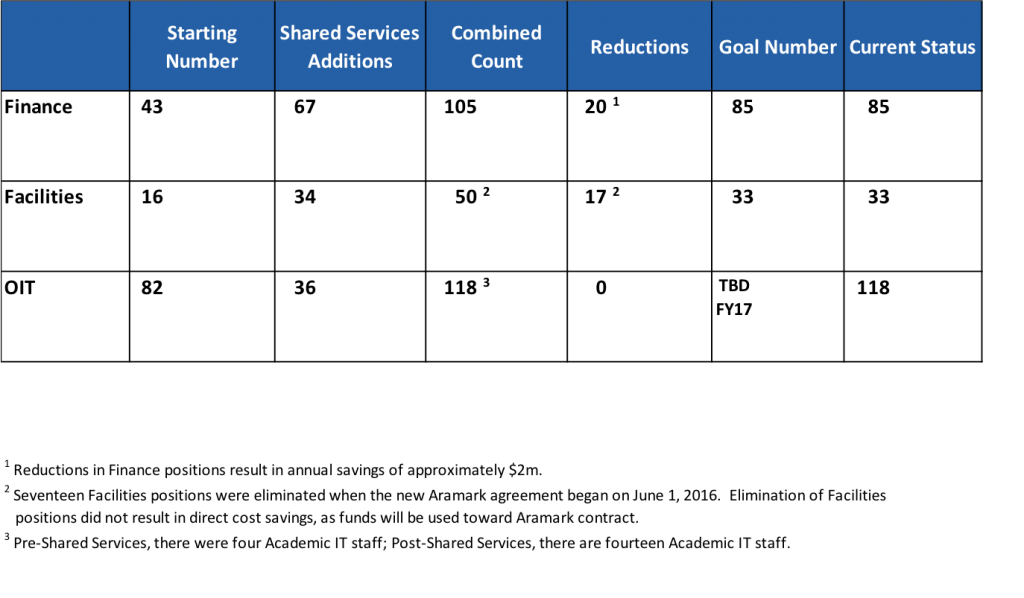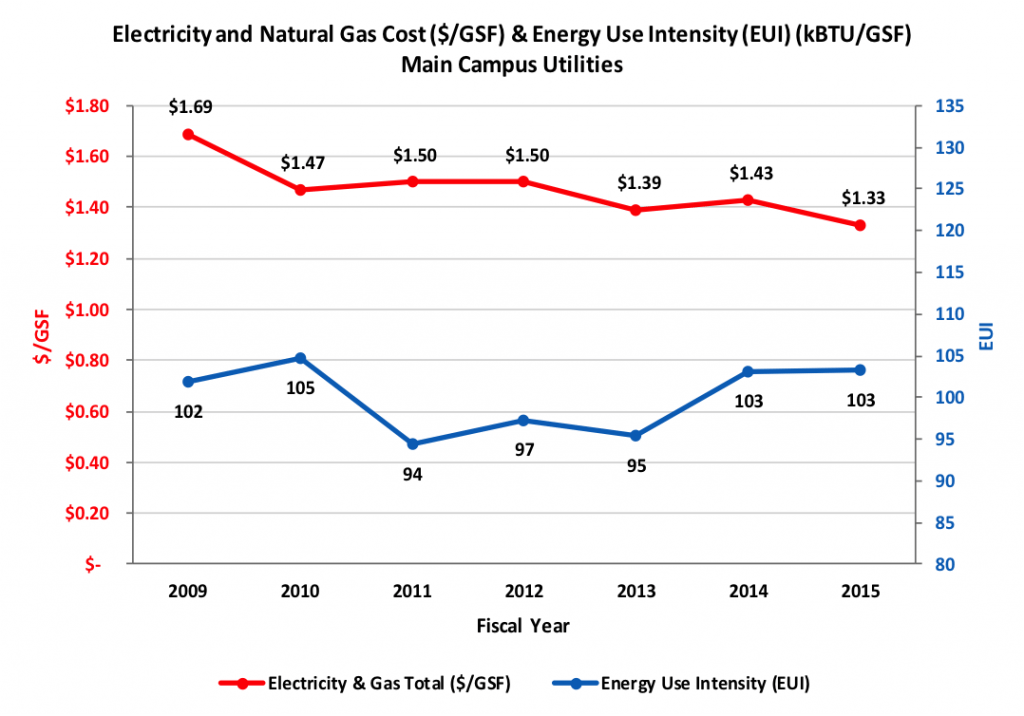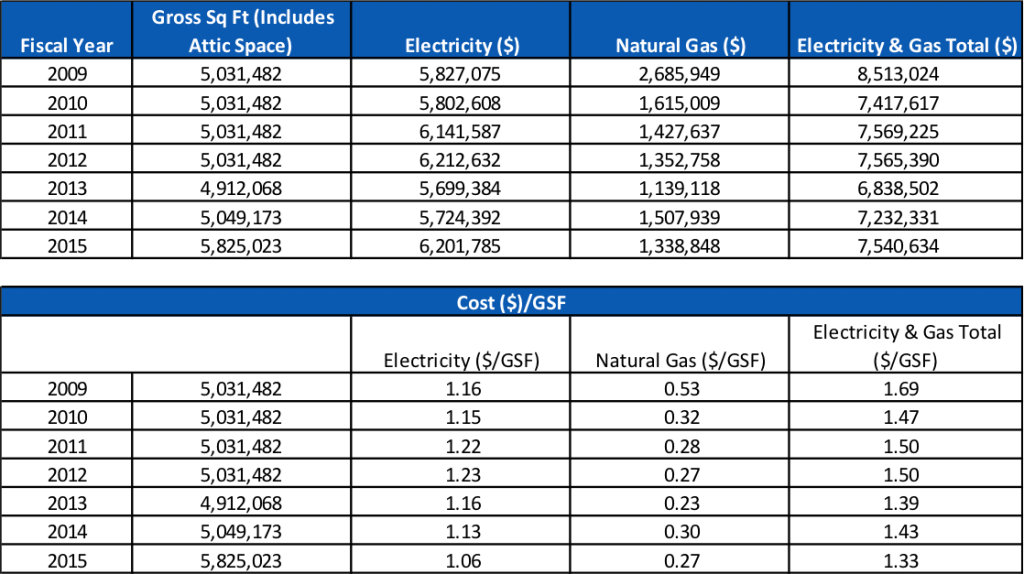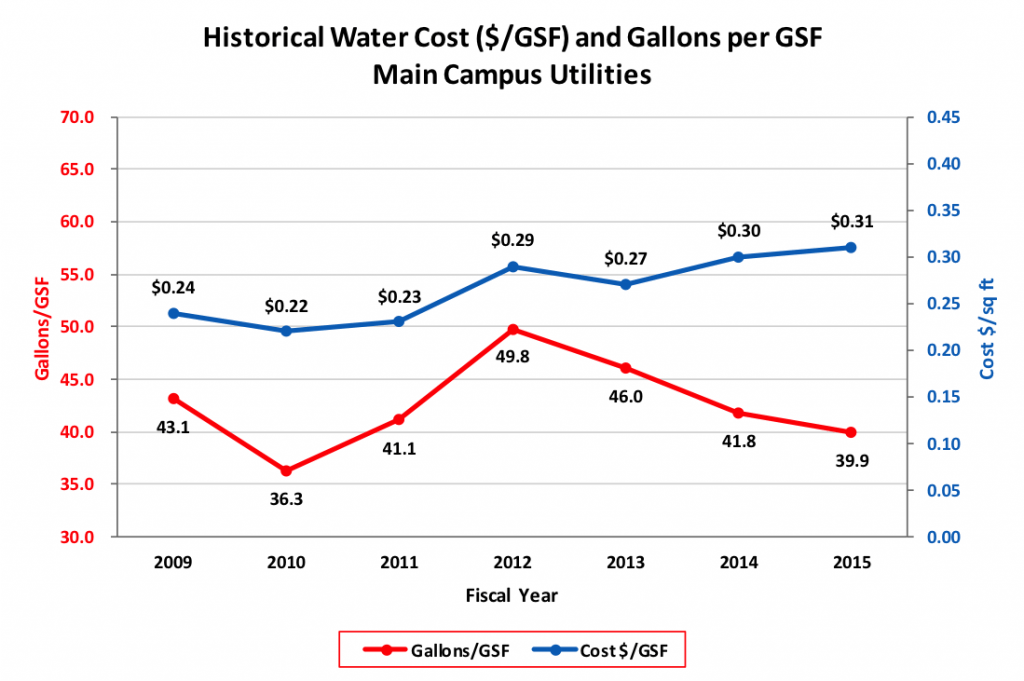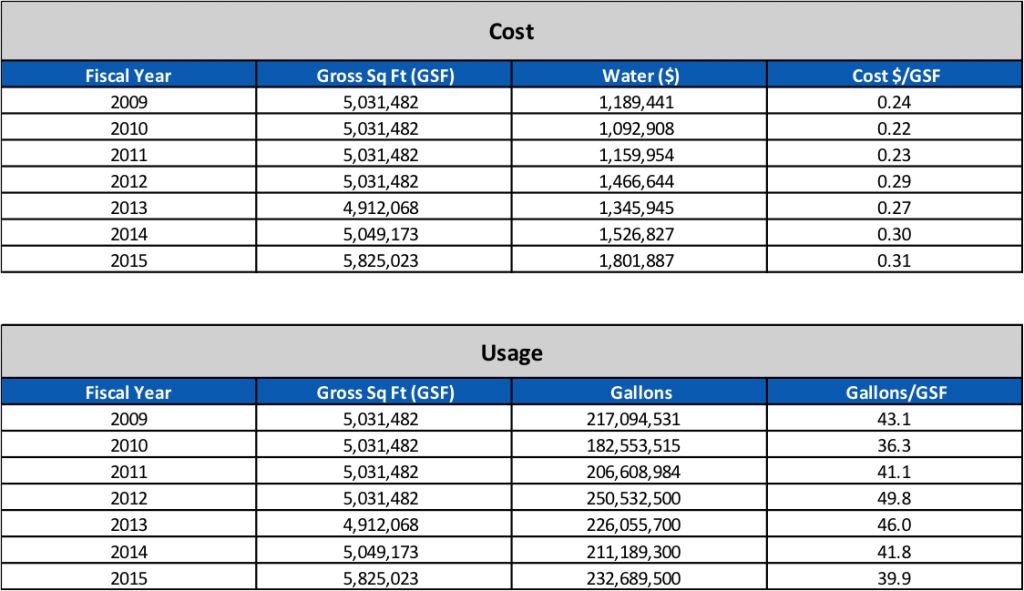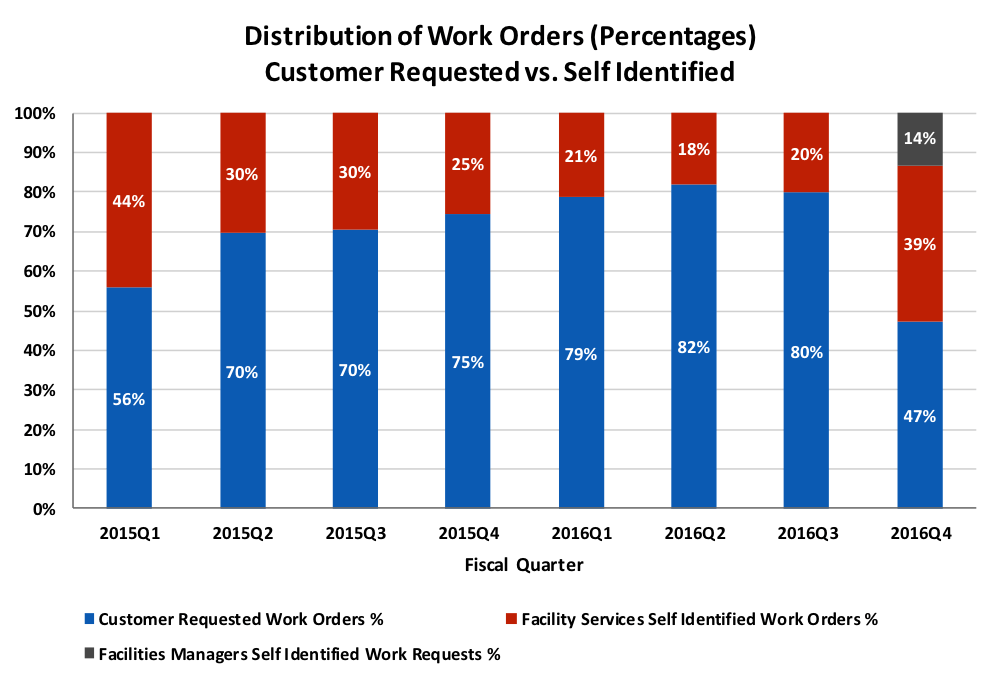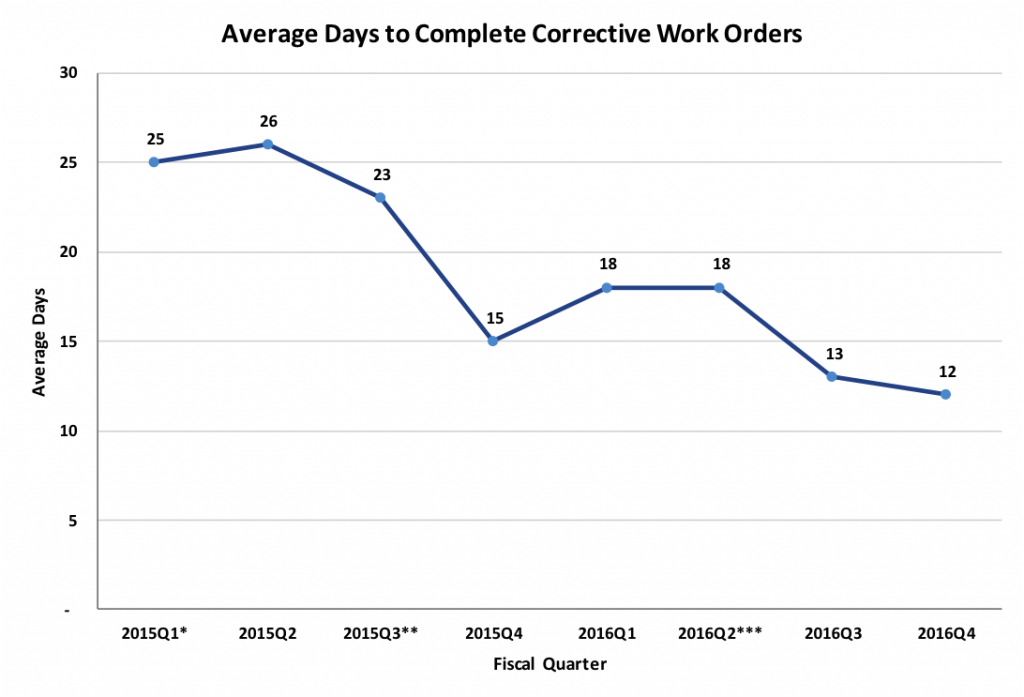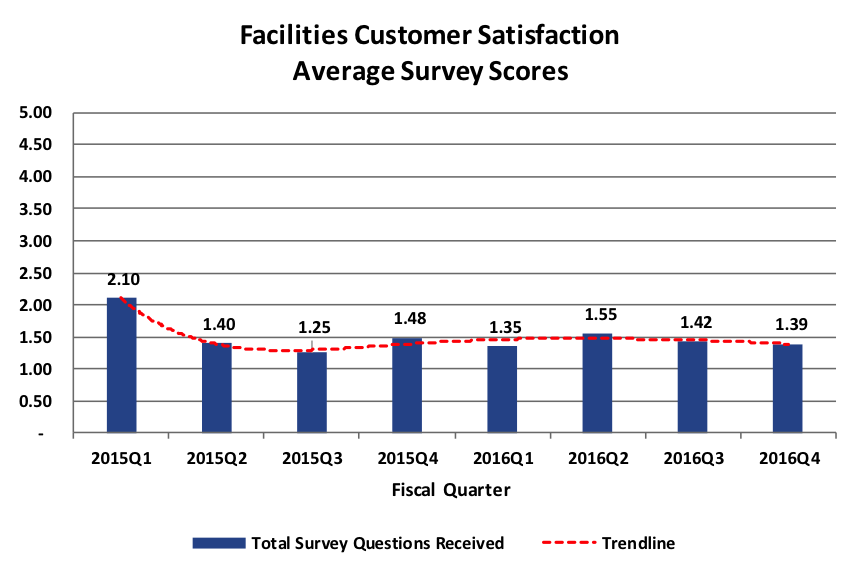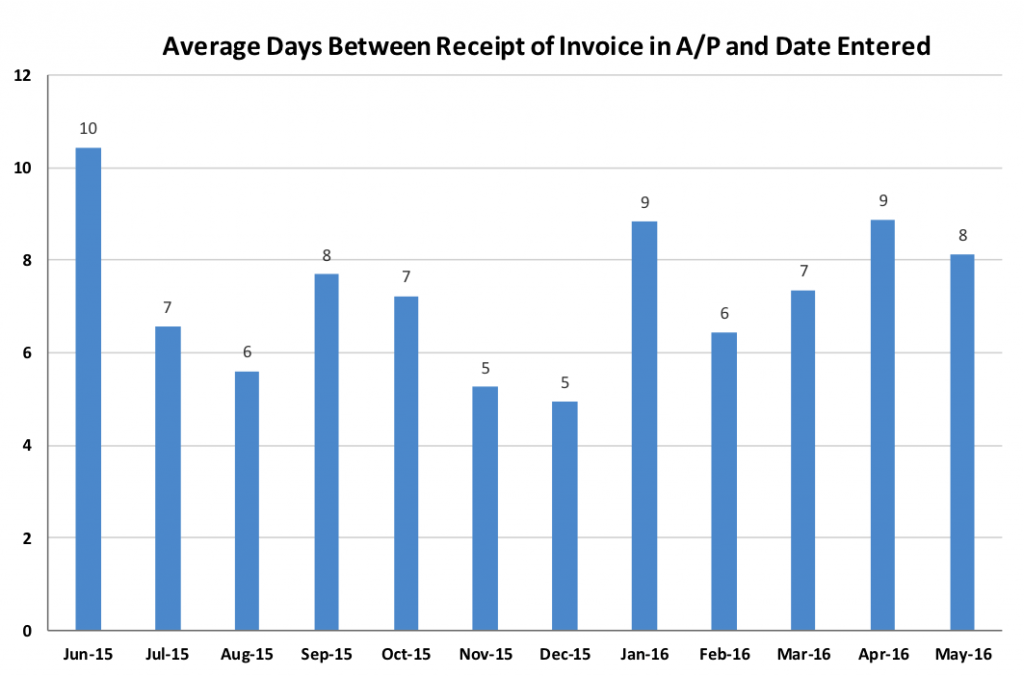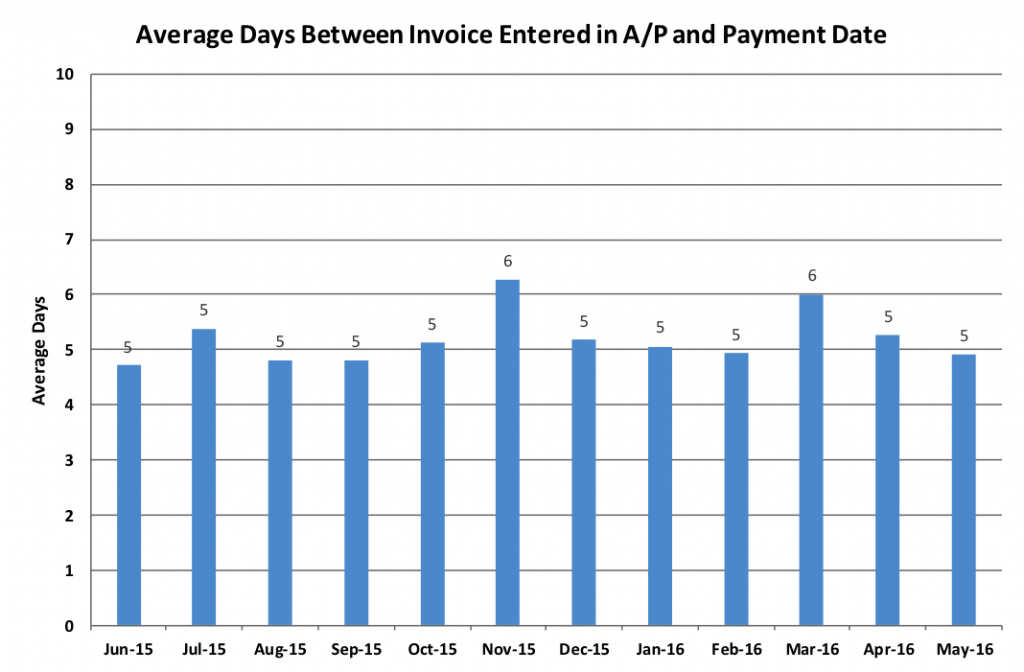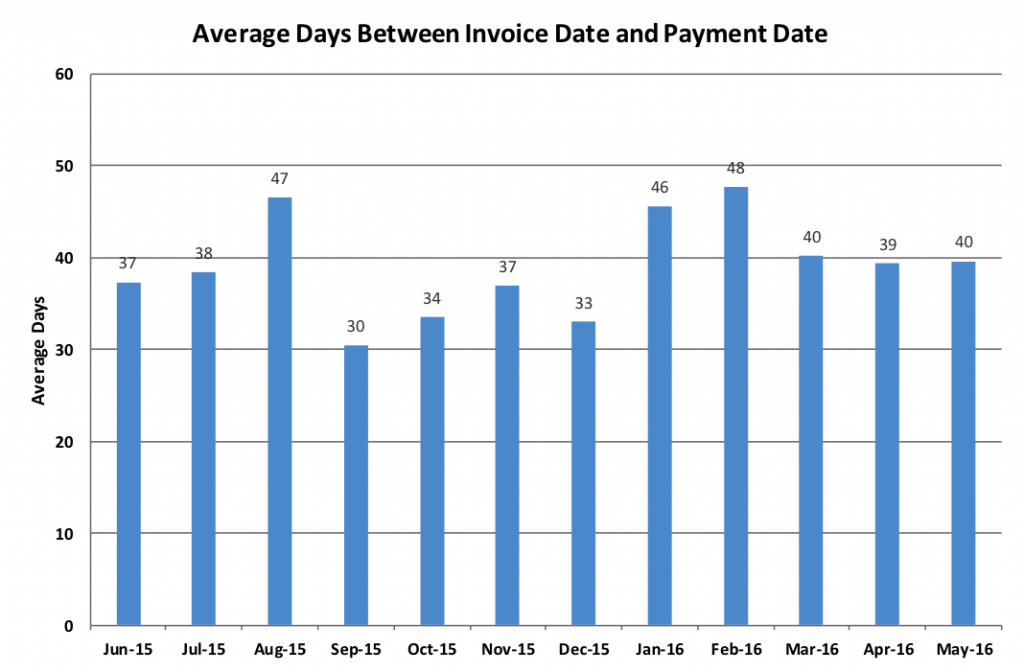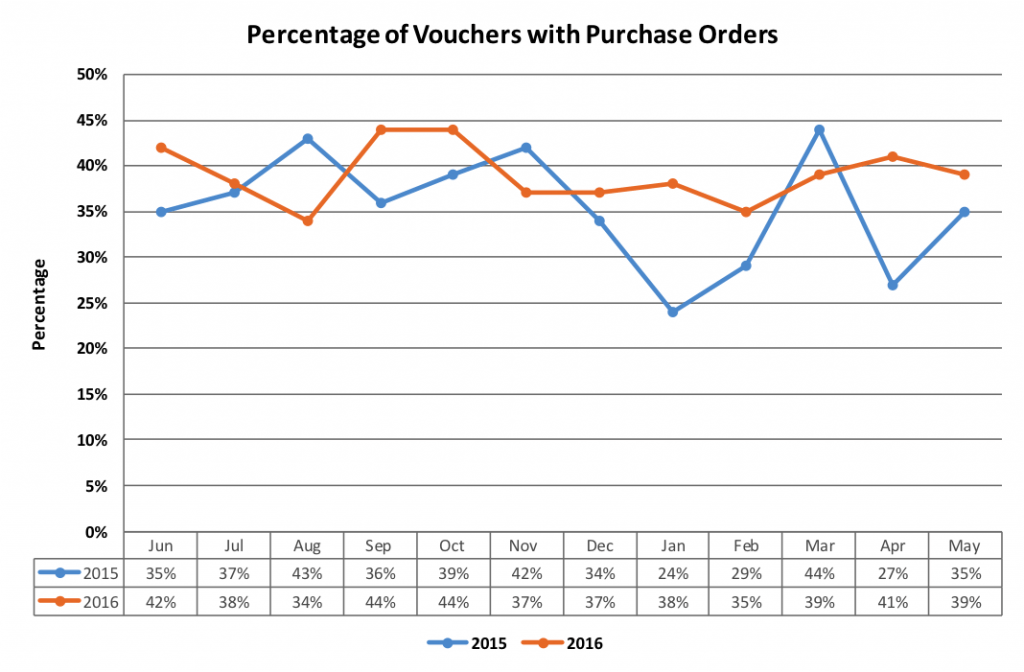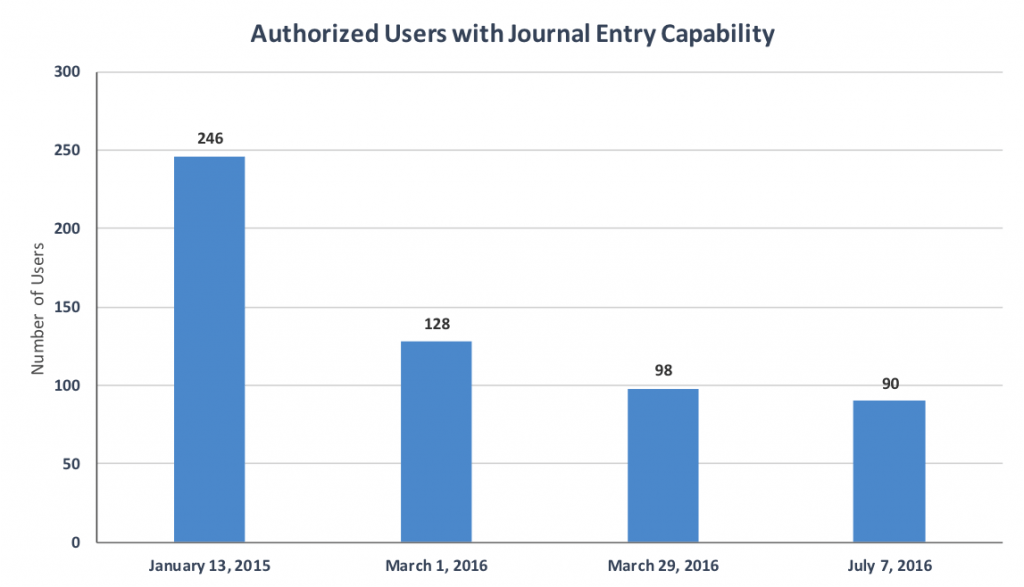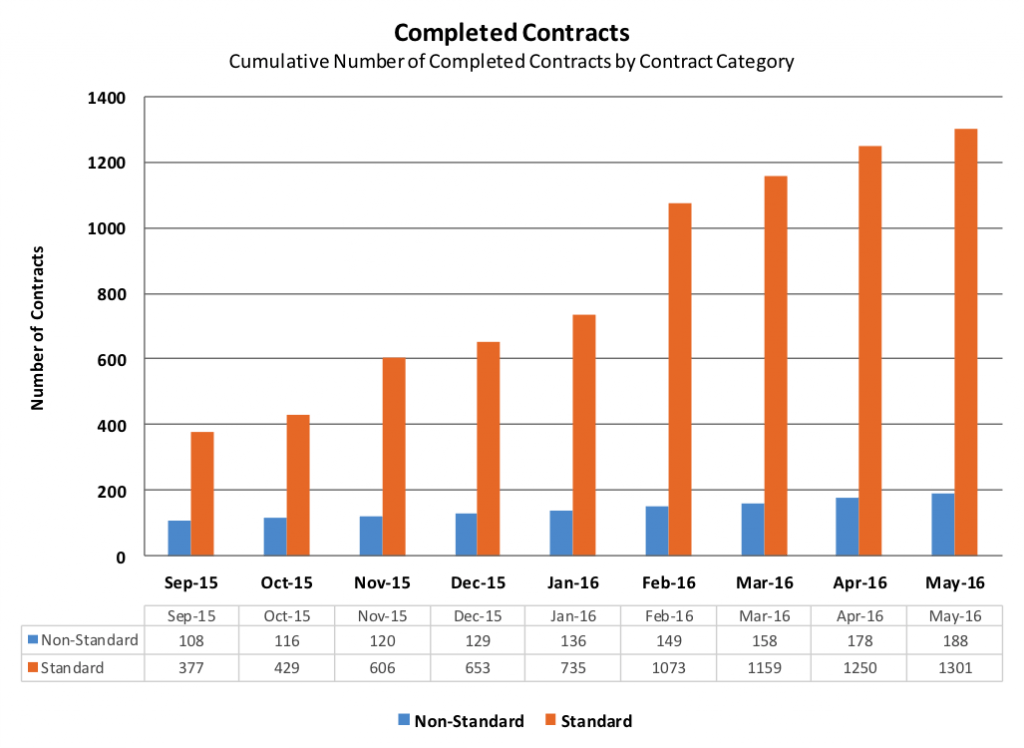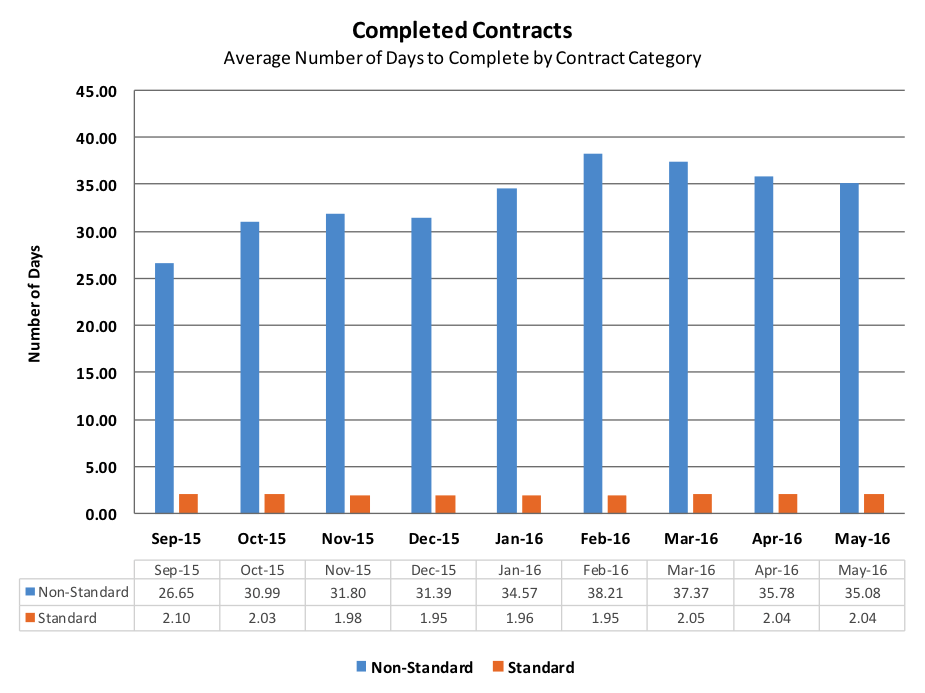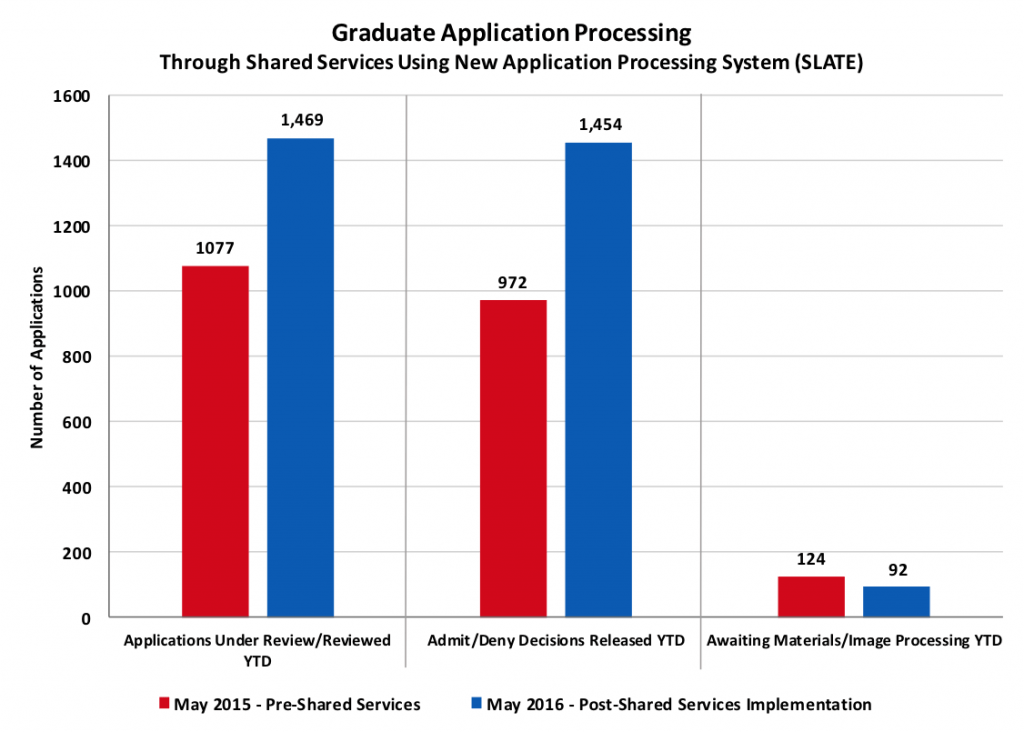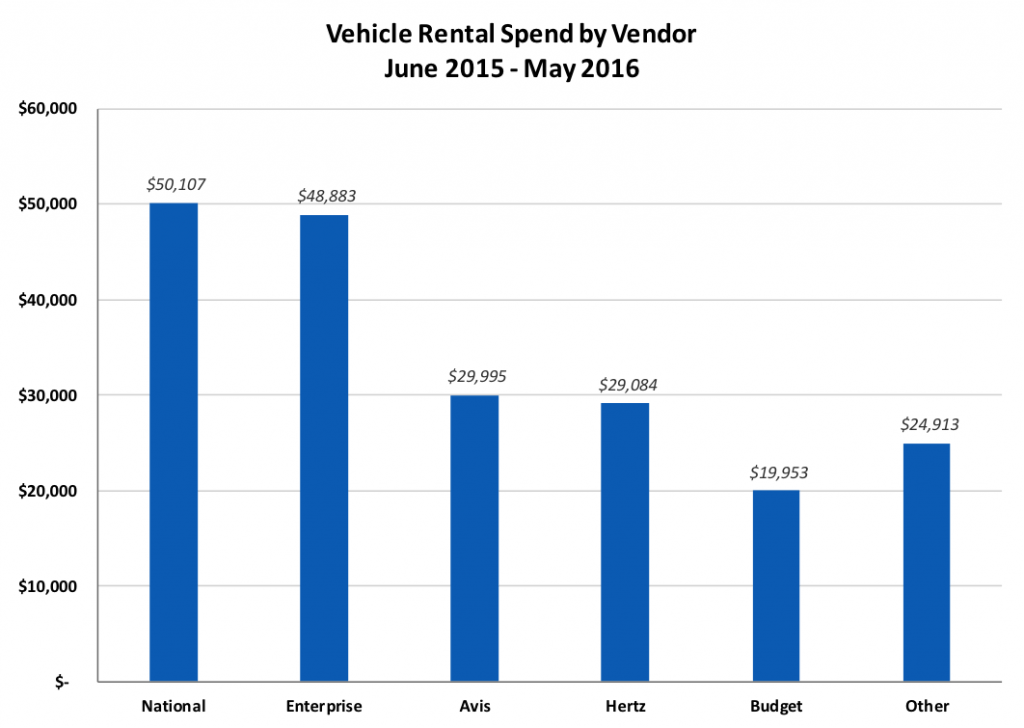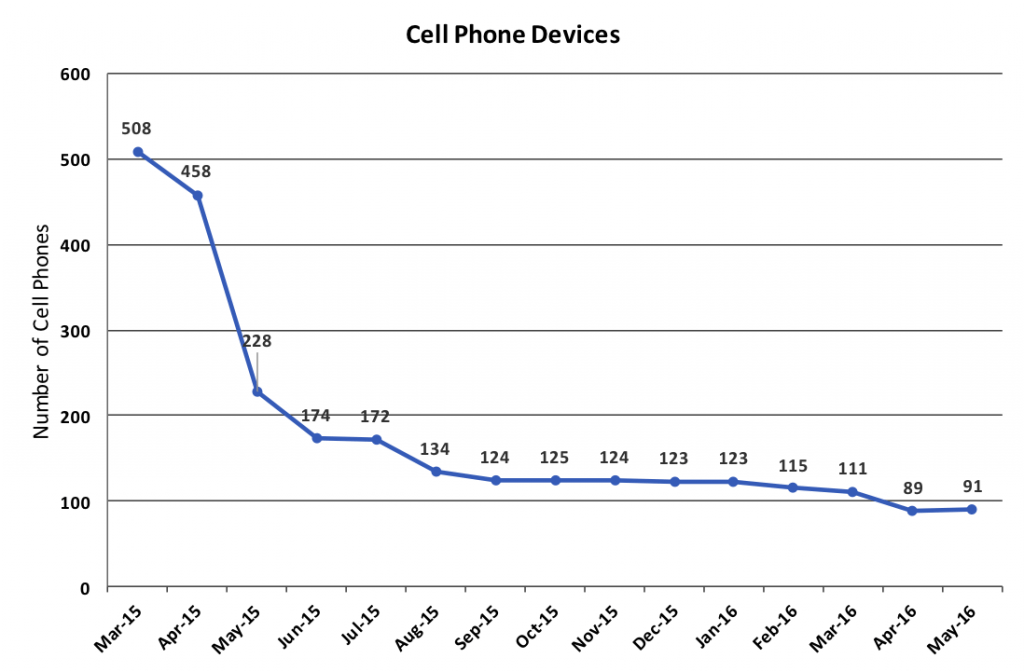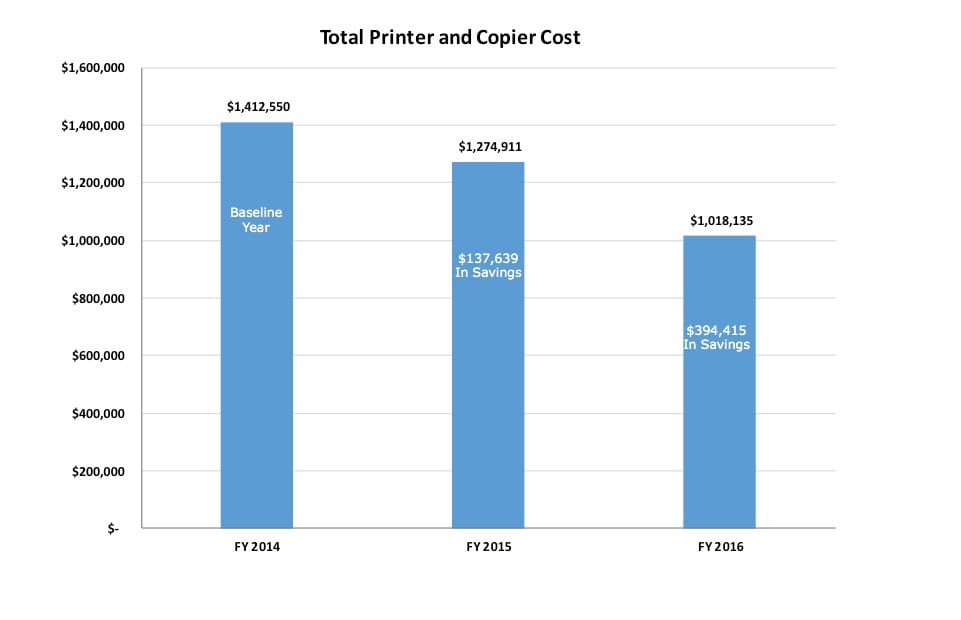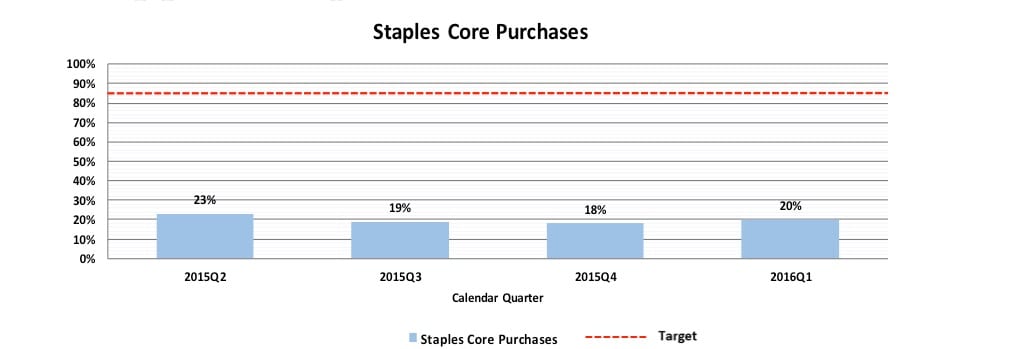Operational Metrics – January 2017
Travel
Goal: To achieve a score of 4 or above.
- SMU will conduct RFP process for travel management company in the spring ‘17 to see if additional price discounts could be achieved through another vendor.
- SMU will conduct RFP process for travel management company in the spring ‘17 to see if additional price discounts could be achieved through another vendor.
- Beginning in September 2016, a cooperative contract with Enterprise/National was loaded in Concur to show reduced pricing options. contract was utilized for approximately 66% of all rental spend in the 2nd quarter of FY 2017.
Cell Phones
- In April 2016, a few coaches left SMU and a few new coaches arrived in May 2016, which accounts for the drop in April and subsequent increase in May.
- In June 2016, iPads were added for Parking and ID Card Services.
- In July 2016, several coaches left SMU, resulting in the total cell phone count to drop.
- In August 2016, several SMU PD data cards were added to the AT&T plan.
- In October 2016, Parking and ID Card Services purchased several iPads for use with the Giddyup service.
- Goal: To support minimal number of SMU provided cell phones.
- The amounts spent in June FY2015 were less than the two months following due to refunds received for cell phones turned in.
- Occasional increase in monthly expense may indicate purchase of equipment and/or data overage charges.
- Total expenses for cell phone devices for FY2015 and FY2016 were $424,592 and $90,941, respectively. This translates to a savings of $333,651. It is expected that the expense for FY2017 will remain comparable to that of FY2016.
- Goal: To decrease expense as much as possible.
Printers
- The importance of reducing machine count is primarily due to future replacement costs. For example, the average life of a personal printer is 8 years. Therefore, 12.5% of the printers need to be replaced annually. By August 2016, we have reduced the number of printers by 1,473, which equates to approximately 184 printers that do not need to be replaced on an annual basis.
- If, for example, the average replacement cost is $300 per unit, this would translate to just above $55,000 of annual cost avoidance. Once the machine count is reduced to 1,000, the estimated annual cost avoidance figure will be approximately $56,000.
- Ongoing review and evaluation of the campus print environment will allow SMU to reduce the fleet to 1,000 supported printers.
- SMU covers toner, paper, supplies and maintenance cost for supported printers.
- Goal: To limit total count to a maximum of 1,000 supported units. This figure was determined by assigning an approximate 2.5:1 ratio of SMU employees to printer. The goal was reached in September 2016 and printer counts will be monitored to ensure that these do not go back up to above 1,000.
- Effective June 1, 2015, SMU entered into a Print Management Services agreement with a preferred vendor (Imagenet).
- Savings are calculated by comparing baseline fiscal year 2014 to each subsequent year.
- Figures for fiscal years 2014 and 2015 are estimates, as copier and printer equipment and supplies were sourced and purchased from multiple vendors and through various processes, making it impractical to track actual expenses.
- Goal: To continue to realize cost savings associated with printing and copy costs.
Office Supplies
- This metric shows that the organization grants purchasing rights to a limited number of employees to ensure that office supplies are purchased through larger orders, which gives rise to purchase discounts when the order average size is over $275.
- Goal: To maintain the target number of authorized users and avoid having the number increase.
- Average order size over $275 allows SMU to have the best pricing and a 1% discount, which is displayed in the table below the graph.
- The 1% discount is taken off each order and is reflected on the monthly Staples invoice.
- The benefit of the discount is allocated to the budget orgs that placed the corresponding orders.
- Goal: To maintain an average order size of $275 and above, in order to benefit from this discount.
- Prompt pay was first achieved with the November 2015 invoice.
- This discount type is generally taken at time of payment.
- The benefit of the discount is allocated to the budget orgs that placed the corresponding orders.
- Goal: To receive the 2% discount on every invoice by paying the Staples invoices within the discount period
- SMU receives a 1% rebate, in the form of a check, at the end of each contract year, based on total spend.
- As a result of SMU’s contract with Staples, SMU benefits from discounted pricing ranging from 5% to 75% off retail.
- Contract year is April 1 though March 31.
- The rebate is allocated to the budget orgs that placed the corresponding orders.
- Staples Core is a list of approximately 400 items that have the deepest discount available. Items are identified as “On Contract” in the online shopping site.
- In its efforts to maximize the core items savings, the Purchasing Department works with Staples on a quarterly basis to adjust core items list. In addition, Authorized Users and shoppers will be informed on a regular basis, as determined by the Director of Purchasing, of any updates to the core items listing, as well as of the importance of purchasing items that are on the list.
- To demonstrate the impact of core vs. non-core purchasing, a small sampling of heavily purchased items has been included in the following table:
- Purchasing met with Staples in November 2016 to discuss making changes to the core list of items, as well as to consider a different way to save on office supplies. For example, SMU asked Staples to provide a pricing schedule using a recent cooperative contract award (E&I Cooperative Services) using the same market basket provided to Office Depot. The review would consider pricing, rebate, order size and payment terms. The Purchasing department indicated a completion date of the week of November 28th, 2016 for the review. Purchasing will report any findings by the end of January 2017.
- Goal: To increase the percent of core purchases to realize the most savings. A target of 85% was set per Staples recommended best practices.
Contracts
- Completed contracts reflect all contracts completed since the new contract administration process was implemented on April 15, 2015. Beginning in September 2015, SMU went live with Selectica’s Contracts Lifecycle Management software and contracts are now being reported with Selectica’s reporting feature. Prior to Selectica launching, contracts were tracked manually on spreadsheets.
- SMU Resources are departments and/or individuals with expertise in various areas of contract management.
- The Office of Legal Affairs (OLA) has prepared standard forms to be used across campus. If there are no special requirements or deviations from accepted OLA language, contracts can be processed for signature without review by SMU resources.
- Non-Standard contracts require review by appropriate SMU resources as necessary.
- This data does not include employment, endowment, grants and purchase orders which are outside of the new contract administration process.
- Completed Contracts reflect all contracts completed since the new contract administration process was implemented on April 15, 2015. Beginning in September 2015, SMU went live with Selectica’s Contracts Lifecycle Management software and contracts are now being reported with Selectica’s reporting feature. Prior to Selectica launching, contracts were tracked manually on spreadsheets.
- SMU resources are departments and/or individuals with expertise in various areas of contract management.
- The Office of Legal Affairs has prepared standard forms to be used across campus. If there are no special requirements or deviations from the accepted OLA language, contracts can be processed for signature without review by SMU resources.
- Non-Standard contracts require review by appropriate SMU resources as necessary.
- This data does not include employment, endowment, grants and purchase orders which are outside of the new contract administration process.
- Completed contracts reflect all contracts completed since the new contract administration process was implemented on April 15, 2015. Beginning in September 2015, SMU went live with Selectica’s Contracts Lifecycle Management software and contracts are now being reported with Selectica’s reporting feature. Prior to Selectica launching, contracts were tracked manually on spreadsheets.
- SMU resources are departments and/or individuals with expertise in various areas of contract management.
- Number of days in each of the SMU resources group reflects the time from the date a contract request was made to the resource group through the date of approval of the resources group.
- Effective July 1, 2016, the Legal Affairs bar includes a shaded area that represents the average time period during which legal edits are being negotiated with vendors and/or their counsel. The solid area of the bar reflects the time from the date a contract request is made to the Office of Legal Affairs through the date of their initial redline/draft. Prior to July 1, 2016, Selectica was not set up to track a legal negotiation phase.
- Open Contracts reflect the total number of open contracts in the new contract administration process.
- Open contracts in queue reflect the number of days on average for the remaining contracts that have not been completed according to their contract category.
- The open contracts could be in various stages of approval within the University or with the vendor or vendor’s counsel.
- The drop in days for non-standard contracts in September, 2016 was due to closure of a contract that had been open for 400+ days.
- Open contracts in queue reflect the number of days on average the remaining open contracts have been open according to the resource group.
- Number of days in each of the SMU resource groups reflects the time from the date a contract request was made to the resource group through the date of approval of the resource group.
- Effective July 1, 2016, the Legal Affairs bar includes a shaded area that represents the average time period during which legal edits are being negotiated with vendors and/or their counsel. The solid area of the bar reflects the time from the date a contract request is made to the Office of Legal Affairs through the date of their initial redline/draft. Prior to July 1, 2016, Selectica was not set up to track a legal negotiation phase.
- With changes in the contracts administration process and keeping in line with the procurement initiative and the travel policy, contracts which formerly went through the contracting process have now been moved to purchasing. Examples of these include but are not limited to contracts for hotels, catering, events, media, transportation, entertainment, printing and promotional items.
- As the Contract Leads receive additional training, they will become more familiar with what needs to be processed through purchasing versus the contract process.
- *The sudden increase in November 2015 is attributable to the fact that a number of contract leads were transferred to other shared services centers. The move necessitated the need for new contract leads to be identified and trained. The process took most of October and part of November.
- **The increase in May 2016 is likely attributable to graduations and events, which may have made contract leads unsure if items should
be a PO or contract. - Effective September 2016, contracts no longer sent to Purchasing. Therefore, this metric is no longer relevant.
Graduate Application Processing
- The information presented above is based on results of a survey that was sent to 39 active Slate users in Lyle in November 2016. There was a 23% response rate to the survey (9 respondents).
- Goal: To maintain a high level of satisfaction with the graduate application process.
- Based on calendar year.
- A significant drop in the number of survey responses after 2013 is attributable to the fact that OIT drastically reduced the amount of surveys it sent out, due to feedback from a focus group that was conducted by HR and OIT.
- The minor drop in overall ratings in 2015 coincides with the shared services organizational design initiative being set in place.
- Goal: To maintain a 90% or higher satisfaction rate.
IT
- Based on calendar year.
- A significant drop in the number of survey responses after 2013 is attributable to the fact that OIT drastically reduced the amount of surveys it sent out, due to feedback from a focus group that was conducted by HR and OIT.
- The minor drop in overall ratings in 2015 coincides with the shared services organizational design initiative being set in place.
- Goal: To maintain a 90% or higher satisfaction rate.
- Based on calendar year.
- The line for “Resolution Within Reasonable Timeframe” is hidden from January through April because it follows the exact path (percentages) as “Issue Resolved to Satisfaction”.
- The abrupt decline in customer satisfaction for the month of December is attributable to the fact that there were only nine survey responses, which represent a 1% response rate. To add context, the response rate for December 2015 was 9%, or 62 responses. The decline in response rate is attributable to a software malfunction, which occurred as of December 6th. This malfunction broke the ability for people to login and take the surveys. The functionality of the system has since been restored and OIT expects to have a more dependable customer satisfaction reading beginning January 2017. It is recommended that the above stated December reading be disregarded for the reasons noted herein.
- Goal: To maintain a 90% or higher satisfaction rate.
- This metric tracks the rate at which incoming calls are answered without rolling to voice mail.
- The increase in percentage from 2011 to 2012 is potentially attributable to the fact that the voice mail option was removed for incoming help desk calls. This led to calls either being answered or abandoned by caller.
- Goal: To maintain a rate of 95% or higher.
- *Division of Enrollment Services.
- E-forms in progress – four at this time: New Org Request, PAF (benefit eligible), SMU Parking Deduction Authorization – Expressway Tower and SMU Parking Deduction Authorization.
- Goal: An increase of e-form implementations, which will create a more efficient workflow.
- Based on calendar year.
- OIT has recently begun a project to upgrade the Campus Solutions system and will examine customizations in that process. The first phase in the project is called “fit gap” and should start to examine how delivered functionality from PeopleSoft can be exploited.
- Goal: To reduce the total number of customizations performed on the ERP system.
Finance
- Fiscal year-to-year comparison.
- Beginning June 2016, there was a reduction of several thousand JE lines due to Facilities reducing volume from their department.
- Since the elimination of cross charges, there has been a reduction of several thousand JE lines over last year.
- The spike in volume that occurs in May of each year is due to fiscal year end journal entries.
- Goal: To reduce the number of manual journal entries processed.
- Fiscal year-to-year comparison.
- In the first quarter of FY 2017, the Accounts Payable department initiated testing, on a limited test group, an initiative whereby vendor invoices are received centrally to Accounts Payable, at which point an electronic approval workflow is initiated. The goal of this initiative is to shorten the period during which an invoice makes its way through various coding/approval channels before arriving in A/P for processing and payment. With the electronic approval mechanism that this workflow provides, approvers can view and approve invoices on their mobile device and forward on to the next approver in the workflow and so forth, until the approved invoice arrives, in electronic form, to A/P for processing.
- Goal: To reduce the number of days between invoice date and receipt of invoice in A/P.
- Fiscal year-to-year comparison.
- Goal: To reduce the number of days between receipt of invoice in A/P and date invoice entered into system.
- Fiscal year-to-year comparison.
- Beginning on December 5th, 2017, the A/P department started processing check runs Monday through Thursday, as opposed to only Monday and Wednesday, which was the previous practice.
- Beginning on January 9th, 2017, the A/P department started processing check runs Monday through Friday. As a consequence, this metric should show a reduction in average days, thereby reducing the overall A/P cycle time.
- Goal: To reduce the number of days between invoice entered in A/P and payment date.
- Fiscal year-to-year comparison.
- In the first quarter of FY 2017, the Accounts Payable department initiated testing on an initiative whereby vendor invoices are received centrally to Accounts Payable, at which point an electronic approval workflow is initiated. The goal of this initiative is to shorten the period during which an invoice makes its way through various coding/approval channels before arriving in A/P for processing and payment. With the electronic approval mechanism that this workflow provides, approvers can view and approve invoices on their mobile device and forward on to the next approver in the workflow and so forth, until the approved invoice arrives, in electronic form, to A/P for processing.
- Goal: To reduce the number of days between invoice date and payment date.
- Journal entry capability was removed from users in various phases, which did not occur at regular intervals. Therefore, the dates above do not follow a particular pattern.
- Goal: To reduce the number of manual journal entries and to increase controls and data input accuracy and consistency.
Finance
- The data presented excludes: RLSH Apartments, Greek Houses, East Campus, Plano Campus & Taos Campus. These buildings are excluded because the square feet for this slide relate only to electricity and natural gas fed from the Central Plant and the multi-stack system in the Mustang Parking Center.
- Energy Use Intensity (EUI) is the measure of how much electricity and natural gas is used per gross square foot per year.
- EPA’s Energy Star indicates that the national median site EUI for a four-year university is 131 kBTU/GSF/Yr.
- Weather will influence energy usage, from unusually hot summers to severe cold winters, and will impact how much energy is used per square foot from year to year.
- Goal: To maintain low energy cost and an EUI that is below the national median for a four-year university.
- The data presented excludes: RLSH Apartments, Greek Houses, East Campus, Plano Campus & Taos Campus. These buildings are excluded because the square feet for this slide relate only to electricity and natural gas fed from the Central Plant and the multi-stack system in the Mustang Parking Center.
- Weather will influence energy usage, from unusually hot summers to severe cold winters and will impact how much energy is used per square foot from year to year.
- The increase in GSF from 2014 to 2015 is attributable to the new residential commons, Arnold dining, and the 800-space parking center being added.
- Goal: To maintain low energy cost.
- The data presented excludes: RLSH Apartments, Greek Houses, Tennis Courts, University Data Center, East Campus, Plano Campus & Taos Campus. These are excluded because the square feet for this slide specifically relate to water fed from the three water meters for the main campus.
- The high water usage during fiscal years 2012 and 2013 is attributable to a combination of unusually high temperatures and low levels of annual precipitation.
- Goal: To maintain water usage below 50 gallons per gross square foot per year.
- The data presented excludes: RLSH Apartments, Greek Houses, Tennis Courts, University Data Center, East Campus, Plano Campus & Taos Campus. These are excluded because the square feet for this slide specifically relate to water fed from the three water meters for the main campus.
- The increase in GSF from 2014 to 2015 is attributable to the new residential commons, Arnold dining, and the 800-space parking center being added.
- The high water usage during fiscal years 2012 and 2013 is attributable to a combination of unusually high temperatures and low levels of annual precipitation.
- Goal: To maintain water usage below 50 gallons per gross square foot per year.
- Precipitation data is collected from the National Oceanic and Atmospheric Administration (NOAA) weather station at Love Field Airport.
- Weather conditions will affect the main quad’s water usage, in that, during seasons of drought, more water will be required. Conversely, during seasons of above average precipitation, less water will be required to irrigate the main quad. Therefore, the goal to reduce usage is set at a range in order to accommodate the effects of weather. In addition, SMU requires that the main quad remain green year round, which is also a contributing factor to water usage.
- Conversion from rotary type irrigation sprinkler heads to sprayer irrigation sprinkler heads for reduction of water consumption in the Main Quad was completed in mid-August 2016.
- Goal: To reduce main quad irrigation to a range between 4.9 – 5.2 million gallons/fiscal year based upon FY2014 usage of 6.4 million gallons of water.
- Includes all Base Services and Additional Services work orders. Additional Services work orders impact the results due to their unplanned, unforeseen and out-of-sequence nature.
- Excluded: Preventive Maintenance Work orders and SMU in Taos.
- Facilities Managers started submitting self identified work requests in the computerized maintenance management system on March 1, 2016.
- Goal: To continually see a decline in customer requested work orders to attain a level not to exceed 50%.
- Includes all Base Services and Additional Services work orders. Additional Services work orders impact the results due to their unplanned, unforeseen and out-of-sequence nature.
- Excluded: Preventive Maintenance Work orders and SMU in Taos.
- Facilities Managers started submitting self identified work requests in the computerized maintenance management system on March 1, 2016.
- Goal: To continually see a decline in customer requested work orders to attain a level not to exceed 50%.
- Includes all Base Services and Additional Services work orders. Additional Services work orders impact the results due to their unplanned, unforeseen and out-of-sequence nature.
- Effective May 1, 2016, surveys issued on all non-self-identified work orders. From June 1, 2015 – April 30, 2016 surveys issued on every 3rd non-self-identified work order.
- Goal: To maintain a customer average score between Excellent (1) and Good (2).
- Includes all Base Services and Additional Services work orders. Additional Services work orders impact the results due to their unplanned, unforeseen and out-of-sequence nature.
- *New CMMS System rolled out (TMA) in 2015Q1.
- **Procedural change in the beginning of 2015Q3 to close open work orders.
- ***Procedural change in the beginning of 2016Q2 to allow technicians to close work orders in real time.
- Goal: To complete corrective work orders within an average of 10 calendar days.
- Includes all Base Services and Additional Services work orders. Additional Services work orders impact the results due to their unplanned, unforeseen and out-of-sequence nature.
- Excluded: Preventive Maintenance Work orders and SMU in Taos.
- Staff/Faculty counts used for calculating this metric are obtained from SMU’s Institutional Research website.
- Goal: To minimize and keep average customer submitted work orders under 1 per SMU FTE (Faculty & Staff) per fiscal quarter.
- For 2006-2015: Gross square footage (GSF) includes attic space. Does not include the following: Plano, Taos, grounds assets, single family houses, apartments, President’s house, Sigma Chi, commercial and retail properties, 80% of Johnson Square, surface parking lots, Athletic Courts, Athletic Fields, Recreational Courts and Recreational Field.
- For 2016: Gross square footage (GSF) includes attic space. Does not include the following: Plano, Taos, grounds assets, single family houses, apartments, President’s house, Sigma Chi, commercial and retail properties, 63.73% of Johnson Square, 52.43% of Expressway Tower, surface parking lots, Athletic Courts, Athletic Fields, Recreational Courts and Recreational Field.
- Information for faculty/staff FTE and student FTE cited from SMU’s Office of Institutional Research website. Information for GSF provided by SMU’s Office of Facilities Planning and Management.
- Target areas for the two categories are based on benchmarking against peer institutions. Calculations were made using information found on Vanderbilt’s and TCU’s websites, as follows: (1) Vanderbilt (Aspirant) – 6,900,000 SF, 4,075 faculty/staff and 12,605 students for the fall of 2015. This equates to 547 SF per student FTE and 1,693 SF per faculty/staff FTE, and (2) TCU (Cohort) – 4,476,119 SF, 2,206 faculty/staff and 10,143 students for the fall of 2015. This equates to 441 SF per student FTE and 2,029 SF per faculty/staff FTE.
- Goal: To maintain a square footage ratio per student FTE and per faculty/staff FTE within the total square footage ratios of SMU’s cohort and aspirational institutions, TCU and Vanderbilt, respectively.
Current Operational Metrics – December 2016
Travel
Goal: To achieve a score of 4 or above.
- American Airlines is reviewing data to prepare possible master agreement for discounts/fee reductions. Proposal is expected in Q2 2017.
- SMU has engaged its travel management company, CBT, to assist with setting up meetings with the appropriate areas within Marriott and Hilton for the purpose of negotiating discounted pricing.
- “Other” category represents approximately 550 independent and small group hotels.
- SMU’s Purchasing Department has analyzed the spend data for FY2016 and is in the process of price negotiations with Enterprise Holdings, which is the parent company of National and Enterprise. Contract pricing will cover both National and Enterprise. The Director of Purchasing plans to present an exclusive provider recommendation to the VP of Business and Finance in Q2 2017.
Contracts
- Completed contracts reflect all contracts completed since the new contract administration process was implemented on April 15, 2015. Beginning in September 2015, SMU went live with Selectica’s Contracts Lifecycle Management software and contracts are now being reported with Selectica’s reporting feature. Prior to Selectica launching, contracts were tracked manually on spreadsheets.
- SMU Resources are departments and/or individuals with expertise in various areas of contract management.
- The Office of Legal Affairs (OLA) has prepared standard forms to be used across campus. If there are no special requirements or deviations from accepted OLA language, contracts can be processed for signature without review by SMU resources.
- Non-Standard contracts require review by appropriate SMU resources as necessary.
- This data does not include employment, endowment, grants and purchase orders which are outside of the new contract administration process.
- Completed Contracts reflect all contracts completed since the new contract administration process was implemented on April 15, 2015. Beginning in September 2015, SMU went live with Selectica’s Contracts Lifecycle Management software and contracts are now being reported with Selectica’s reporting feature. Prior to Selectica launching, contracts were tracked manually on spreadsheets.
- SMU resources are departments and/or individuals with expertise in various areas of contract management.
- The Office of Legal Affairs has prepared standard forms to be used across campus. If there are no special requirements or deviations from the accepted OLA language, contracts can be processed for signature without review by SMU resources.
- Non-Standard contracts require review by appropriate SMU resources as necessary.
- This data does not include employment, endowment, grants and purchase orders which are outside of the new contract administration process.
- Completed contracts reflect all contracts completed since the new contract administration process was implemented on April 15, 2015. Beginning in September 2015, SMU went live with Selectica’s Contracts Lifecycle Management software and contracts are now being reported with Selectica’s reporting feature. Prior to Selectica launching, contracts were tracked manually on spreadsheets.
- SMU resources are departments and/or individuals with expertise in various areas of contract management.
- Number of days in each of the SMU resources group reflects the time from the date a contract request was made to the resource group through the date of approval of the resources group.
- Effective July 1, 2016, the Legal Affairs bar includes a shaded area that represents the average time period during which legal edits are being negotiated with vendors and/or their counsel. The solid area of the bar reflects the time from the date a contract request is made to the Office of Legal Affairs through the date of their initial redline/draft. Prior to July 1, 2016, Selectica was not set up to track a legal negotiation phase.
- Open Contracts reflect the total number of open contracts in the new contract administration process
- Open contracts in queue reflect the number of days on average for the remaining contracts that have not been completed according to their contract category.
- The open contracts could be in various stages of approval within the University or with the vendor or vendor’s counsel.
- Open contracts in queue reflect the number of days on average the remaining open contracts have been open according to the resource group.
- Number of days in each of the SMU resource groups reflects the time from the date a contract request was made to the resource group through the date of approval of the resource group.
- Effective July 1, 2016, the Legal Affairs bar includes a shaded area that represents the average time period during which legal edits are being negotiated with vendors and/or their counsel. The solid area of the bar reflects the time from the date a contract request is made to the Office of Legal Affairs through the date of their initial redline/draft. Prior to July 1, 2016, Selectica was not set up to track a legal negotiation phase.
- With changes in the contracts administration process and keeping in line with the procurement initiative and the travel policy, contracts which formerly went through the contracting process have now been moved to purchasing. Examples of these include but are not limited to contracts for hotels, catering, events, media, transportation, entertainment, printing and promotional items.
- As the Contract Leads receive additional training, they will become more familiar with what needs to be processed through purchasing versus the contract process
- *The sudden increase in November 2015 is attributable to the fact that a number of contract leads were transferred to other shared services centers. The move necessitated the need for new contract leads to be identified and trained. The process took most of October and part of November.
- **The increase in May 2016 is likely attributable to graduations and events, which may have made contract leads unsure if items should be a PO or contract.
Cell Phones
- In April 2016, a few coaches left SMU and a few new coaches arrived in May 2016, which accounts for the drop in April and subsequent increase in May.
- In June 2016, iPads were added for Park n Pony.
- In July 2016, several coaches left SMU, resulting in the total cell phone count to drop.
- In August 2016, several SMU PD data cards were added to the AT&T plan.
- Goal: To support minimal number of SMU provided cell phones.
- The amounts spent in June FY2015 were less than the two months following due to refunds received for cell phones turned in.
- Occasional increase in monthly expense may indicate purchase of equipment and/or data overage charges.
- Total expenses for cell phone devices for FY2015 and FY2016 were $424,592 and $90,941, respectively. This translates to a savings of $333,651. It is expected that the expense for FY2017 will remain comparable to that of FY2016.
- Goal: To decrease expense as much as possible.
Printers
- The importance of reducing machine count is primarily due to future replacement costs. For example, the average life of a personal printer is 8 years. Therefore, 12.5% of the printers need to be replaced annually. By August 2016, we have reduced the number of printers by 1473, which equates to approximately 184 printers that do not need to be replaced on an annual basis.
- If, for example, the average replacement cost is $300 per unit, this would translate to just above $55,000 of annual cost avoidance. Once the machine count is reduced to 1000, the estimated annual cost avoidance figure will be approximately $56,000.
- Ongoing review and evaluation of the campus print environment will allow SMU to reduce the fleet to 1000 supported printers.
- SMU covers toner, paper, supplies and maintenance cost for supported printers.
- Goal: To reach 1000 supported units. This figure was determined by assigning an approximate 2.5:1 ratio of SMU employees to printer. It is estimated that the goal of reducing printers to 1000 will be reached by September 2016.
- Effective June 1, 2015, SMU entered into a Print Management Services agreement with a preferred vendor (Imagenet).
- Savings are calculated by comparing baseline fiscal year 2014 to each subsequent year.
- Figures for fiscal years 2014 and 2015 are estimates, as copier and printer equipment and supplies were sourced and purchased from multiple vendors and through various processes, making it impractical to track actual expenses.
- Goal: To continue to realize cost savings associated with printing and copy costs.
Office Supplies
- This metric shows that the organization grants purchasing rights to a limited number of employees to ensure that office supplies are purchased through larger orders, which gives rise to purchase discounts when the order average size is over $275.
- Goal: To maintain the target number of authorized users and avoid having the number increase.
- Average order size over $275 allows SMU to have the best pricing and a 1% discount, which is displayed in the table below the graph.
- The 1% discount is taken off each order and is reflected on the monthly Staples invoice.
- The benefit of the discount is allocated to the budget orgs that placed the corresponding orders.
- Goal: To maintain an average order size of $275 and above, in order to benefit from this discount.
- Prompt pay was first achieved with the November 2015 invoice.
- This discount type is generally taken at time of payment.
- The benefit of the discount is allocated to the budget orgs that placed the corresponding orders.
- Goal: To receive the 2% discount on every invoice by paying the Staples invoices within the discount period.
- SMU receives a 1% rebate, in the form of a check, at the end of each contract year, based on total spend.
- As a result of SMU’s contract with Staples, SMU benefits from discounted pricing ranging from 5% to 75% off retail.
- Contract year is April 1 though March 31.
- The rebate is allocated to the budget orgs that placed the corresponding orders.
- Staples Core is a list of approximately 400 items that have the deepest discount available. Items are identified as “On Contract” in the online shopping site.
- In its efforts to maximize the core items savings, the Purchasing Department works with Staples on a quarterly basis to adjust core items list. In addition, Authorized Users and shoppers will be informed on a regular basis, as determined by the Director of Purchasing, of any updates to the core items listing, as well as of the importance of purchasing items that are on the list.
- To demonstrate the impact of core vs. non-core purchasing, a small sampling of heavily purchased items has been included in the following table:
- Purchasing met with Staples in November 2016 to discuss making changes to the core list of items, as well as to consider a different way to save on office supplies. For example, SMU asked Staples to provide a pricing schedule using a recent cooperative contract award (E&I Cooperative Services) using the same market basket provided to Office Depot. The review will consider pricing, rebate, order size and payment terms. The anticipated completion date of the review is the week of November 28th, 2016.
- Goal: To increase the percent of core purchases to realize the most savings. A target of 85% was set per Staples recommended best practices.
Graduate Application Processing
- The information presented above is based on results of a survey that was sent to 39 active Slate users in Lyle in November 2016. There was a 23% response rate to the survey (9 respondents).
- Goal: To maintain a high level of satisfaction with the graduate application process.
Finance
- Journal entry capability was removed from users in various phases, which did not occur at regular intervals. Therefore, the dates above do not follow a particular pattern.
- Goal: To reduce the number of manual journal entries and to increase controls and data input accuracy and consistency.
- Fiscal year-to-year comparison.
- Beginning June 2016, there was a reduction of several thousand JE lines due to Facilities reducing volume from their department.
- Since the elimination of cross charges, there has been a reduction of several thousand JE lines over last year.
- The spike in volume that occurs in May of each year is due to fiscal year end journal entries.
- Goal: To reduce the number of manual journal entries processed.
- Fiscal year-to-year comparison.
- In the first quarter of FY 2017, the Accounts Payable department initiated testing on an initiative whereby vendor invoices are received centrally to Accounts Payable, at which point an electronic approval workflow is initiated. The goal of this initiative is to shorten the period during which an invoice makes its way through various coding/approval channels before arriving in A/P for processing and payment. With the electronic approval mechanism that this workflow provides, approvers can view and approve invoices on their mobile device and forward on to the next approver in the workflow and so forth, until the approved invoice arrives, in electronic form, to A/P for processing.
- Goal: To reduce the number of days between invoice date and receipt of invoice in A/P.
- Fiscal year-to-year comparison.
- Goal: To reduce the number of days between receipt of invoice in A/P and date invoice entered into system.
- Fiscal year-to-year comparison.
- Goal: To reduce the number of days between invoice entered in A/P and payment date.
- Fiscal year-to-year comparison.
- In the first quarter of FY 2017, the Accounts Payable department initiated testing on an initiative whereby vendor invoices are received centrally to Accounts Payable, at which point an electronic approval workflow is initiated. The goal of this initiative is to shorten the period during which an invoice makes its way through various coding/approval channels before arriving in A/P for processing and payment. With the electronic approval mechanism that this workflow provides, approvers can view and approve invoices on their mobile device and forward on to the next approver in the workflow and so forth, until the approved invoice arrives, in electronic form, to A/P for processing.
- Goal: To reduce the number of days between invoice date and payment date.
- Calculation is based on all regular vouchers greater than $5,000 and grants greater than $3,000.
- As more and more vouchers have corresponding purchase orders, efficiency will rise due to the fact that incoming invoices will be processed without spending valuable time figuring out who ordered the products or services, obtaining approval and account coding.
- Goal: To increase the percentage of vouchers with purchase orders.
IT
- Based on calendar year.
- A significant drop in the number of survey responses after 2013 is attributable to the fact that OIT drastically reduced the amount of surveys it sent out, due to feedback from a focus group that was conducted by HR and OIT.
- The minor drop in overall ratings in 2015 coincides with the shared services organizational design initiative being set in place. Improved ratings can be seen on slide that shows 2016 ratings.
- Goal: To maintain a 90% or higher satisfaction rate.
- Based on calendar year.
- The line for “Resolution Within Reasonable Timeframe” is hidden from January through April because it follows the exact path (percentages) as “Issue Resolved to Satisfaction”.
- Goal: To maintain a 90% or higher satisfaction rate.
- This metric tracks the rate at which incoming calls are answered without rolling to voice mail.
- The increase in percentage from 2011 to 2012 is potentially attributable to the fact that the voice mail option was removed for incoming help desk calls. This led to calls either being answered or abandoned by caller.
- Goal: To maintain a rate of 95% or higher.
- *Division of Enrollment Services.
- E-forms in progress: (1) New Org Request, (2) PAF (benefit eligible), (3) SMU Parking Deduction Authorization – Expressway Tower, (4) SMU Parking Deduction Authorization, (5) Key Request, (6) Grounds Use, (7) Facilities Building and Room Master List and (8) Independent Contractor Determination Workflow.
- Goal: An increase of e-form implementations, which will create a more efficient workflow.
- Based on calendar year.
- Goal: To reduce the total number of customizations performed on the ERP system.
Facilities
- The data presented excludes: RLSH Apartments, Greek Houses, East Campus, Plano Campus & Taos Campus. These buildings are excluded because the square feet for this slide relate only to electricity and natural gas fed from the Central Plant and the multi-stack system in the Mustang Parking Center.
- Energy Use Intensity (EUI) is the measure of how much electricity and natural gas is used per gross square foot per year.
- EPA’s Energy Star indicates that the national median site EUI for a four-year university is 131 kBTU/GSF/Yr.
- Weather will influence energy usage, from unusually hot summers to severe cold winters, and will impact how much energy is used per square foot from year to year.
- Goal: To maintain low energy cost and an EUI that is below the national median for a four-year university.
- The data presented excludes: RLSH Apartments, Greek Houses, East Campus, Plano Campus & Taos Campus. These buildings are excluded because the square feet for this slide relate only to electricity and natural gas fed from the Central Plant and the multi-stack system in the Mustang Parking Center.
- Energy Use Intensity (EUI) is the measure of how much electricity and natural gas is used per gross square foot per year.
- EPA’s Energy Star indicates that the national median site EUI for a four-year university is 131 kBTU/GSF/Yr.
- Weather will influence energy usage, from unusually hot summers to severe cold winters, and will impact how much energy is used per square foot from year to year.
- Goal: To maintain low energy cost and an EUI that is below the national median for a four-year university.
- The data presented excludes: RLSH Apartments, Greek Houses, Tennis Courts, University Data Center, East Campus, Plano Campus & Taos Campus. These are excluded because the square feet for this slide specifically relate to water fed from the three water meters for the main campus.
- The high water usage during fiscal years 2012 and 2013 is attributable to a combination of unusually high temperatures and low levels of annual precipitation.
- Goal: To maintain water usage below 50 gallons per gross square foot per year.
- Precipitation data is collected from the National Oceanic and Atmospheric Administration (NOAA) weather station at Love Field Airport.
- Weather conditions will affect the main quad’s water usage, in that, during seasons of drought, more water will be required. Conversely, during seasons of above average precipitation, less water will be required to irrigate the main quad. Therefore, the goal to reduce usage is set at a range in order to accommodate the effects of weather. In addition, SMU requires that the main quad remain green year round, which is also a contributing factor to water usage.
- Conversion from rotary type irrigation sprinkler heads to sprayer irrigation sprinkler heads for reduction of water consumption in the Main Quad was completed in mid-August 2016.
- Goal: To reduce main quad irrigation to a range between 4.9 – 5.2 million gallons/fiscal year based upon FY2014 usage of 6.4 million gallons of water.
- Includes all Base Services and Additional Services work orders. Additional Services work orders impact the results due to their unplanned, unforeseen and out-of-sequence nature.
- Excluded: Preventive Maintenance Work orders and SMU in Taos.
- Facilities Managers started submitting self identified work requests in the computerized maintenance management system on March 1, 2016.
- Goal: To continually see a decline in customer requested work orders to attain a level not to exceed 50%.
- Includes all Base Services and Additional Services work orders. Additional Services work orders impact the results due to their unplanned, unforeseen and out-of-sequence nature.
- Excluded: Preventive Maintenance Work orders and SMU in Taos.
- Facilities Managers started submitting self identified work requests in the computerized maintenance management system on March 1, 2016.
- Goal: To continually see a decline in customer requested work orders to attain a level not to exceed 50%.
- Includes all Base Services and Additional Services work orders. Additional Services work orders impact the results due to their unplanned, unforeseen and out-of-sequence nature.
- Effective May 1, 2016, surveys issued on all non-self-identified work orders. From June 1, 2015 – April 30, 2016 surveys issued on every 3rd non-self-identified work order.
- Goal: To maintain a customer average score between Excellent (1) and Good (2).
- Includes all Base Services and Additional Services work orders. Additional Services work orders impact the results due to their unplanned, unforeseen and out-of-sequence nature.
- *New CMMS System rolled out (TMA) in 2015Q1.
- **Procedural change in the beginning of 2015Q3 to close open work orders.
- ***Procedural change in the beginning of 2016Q2 to allow technicians to close work orders in real time.
- Goal: To complete corrective work orders within an average of 10 calendar days.
- Includes all Base Services and Additional Services work orders. Additional Services work orders impact the results due to their unplanned, unforeseen and out-of-sequence nature.
- Excluded: Preventive Maintenance Work orders and SMU in Taos.
- Staff/Faculty counts used for calculating this metric are obtained from SMU’s Institutional Research website.
- Goal: To minimize and keep average customer submitted work orders under 1 per SMU FTE (Faculty & Staff) per fiscal quarter.
- Gross square footage (GSF) includes attic space. Does not include the following: Plano, Taos, grounds assets, single family houses, apartments, President’s house, Sigma Chi, commercial and retail properties, 80% of Johnson Square, surface parking lots, Athletic Courts, Athletic Fields, Recreational Courts and Recreational Field.
- Information for faculty/staff FTE and student FTE cited from SMU’s Office of Institutional Research website. Information for GSF provided by SMU’s Office of Facilities Planning and Management.
- Target areas for the two categories are based on benchmarking against peer institutions. Calculations were made using information found on Vanderbilt’s and TCU’s websites, as follows: (1) Vanderbilt (Aspirant) – 6,900,000 SF, 4,075 faculty/staff and 12,605 students for the fall of 2015. This equates to 547 SF per student FTE and 1,693 SF per faculty/staff FTE, and (2) TCU (Cohort) – 4,476,119 SF, 2,206 faculty/staff and 10,143 students for the fall of 2015. This equates to 441 SF per student FTE and 2,029 SF per faculty/staff FTE.
- Goal: To maintain a square footage ratio per student FTE and per faculty/staff FTE within the total square footage ratios of SMU’s cohort and aspirational institutions, TCU and Vanderbilt, respectively.
- The data presented excludes: RLSH Apartments, Greek Houses, Tennis Courts, University Data Center, East Campus, Plano Campus & Taos Campus. These are excluded because the square feet for this slide specifically relate to water fed from the three water meters for the main campus.
- The increase in GSF from 2014 to 2015 is attributable to the new residential commons, Arnold dining, and the 800-space parking center being added.
- The high water usage during fiscal years 2012 and 2013 is attributable to a combination of unusually high temperatures and low levels of annual precipitation.
- Goal: To maintain water usage below 50 gallons per gross square foot per year.
The Operational Excellence Metrics Dashboard – August – September 2016
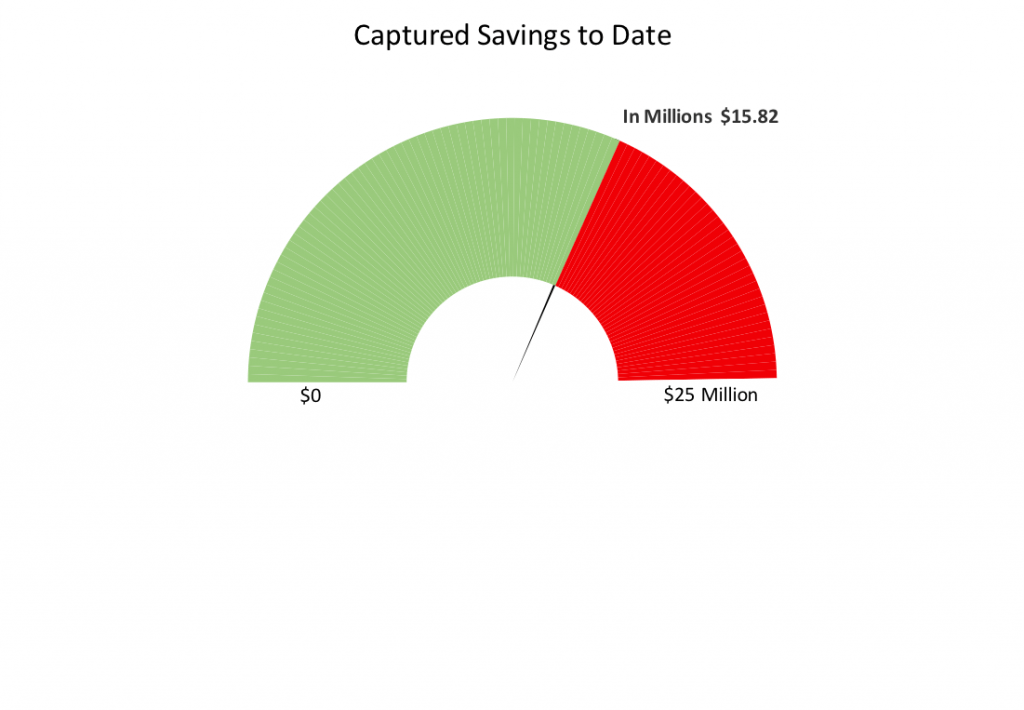
Created to improve operations at SMU and identify savings in administrative costs to reallocate to academic purposes, the Office of Operational Excellence has identified key measurements to track progress towards its mission.
At the beginning of the Operational Excellence for the Second Century (OE2C) project, research revealed that our peers across aspirational universities are spending a greater percentage of funds on the academic mission versus administration costs.
To measure SMU’s progress toward achieving a competitive balance of academic and administrative spending through bold initiatives that serve the staff, faculty, and students, the Office of Operational Excellence has identified a set of key metrics.
Through these institutional metrics, we see indications of clear progress to the academic mission. Some of the University-wide highlights include:
- $15.13 million in savings has been identified to date, toward Operational Excellence’s goal of $25 million
- $3.7 million has been reallocated to general academic reinvestment after correcting a structural budget deficit of 3.86 million
- $1 million has been committed to academic fellowships
- $2 million has been committed to high performance computing
- The largest source of savings came from Organizational Design, wherein staff positions were permanently eliminated. The net change in staff positions from fiscal year 2015 to fiscal year 2016 is 10.1%, which includes Shared Services and normal attrition.
- The second largest source of savings originated in Procurement, the initiative that covered cell phones, desktop printing and office supplies.
In the coming weeks, Operational Excellence will showcase metrics from our initiatives across the University.
The Institutional Metrics Dashboard
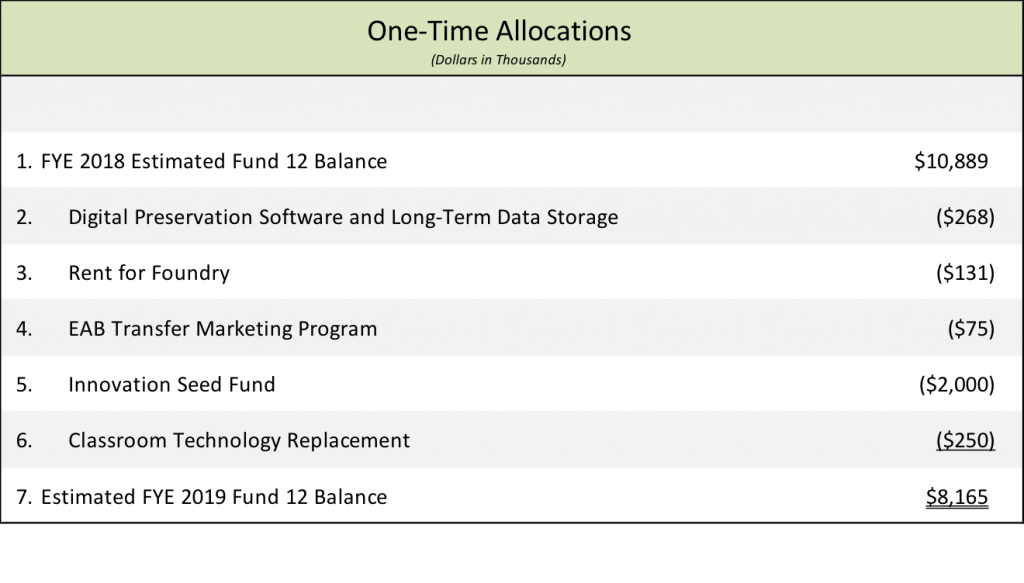
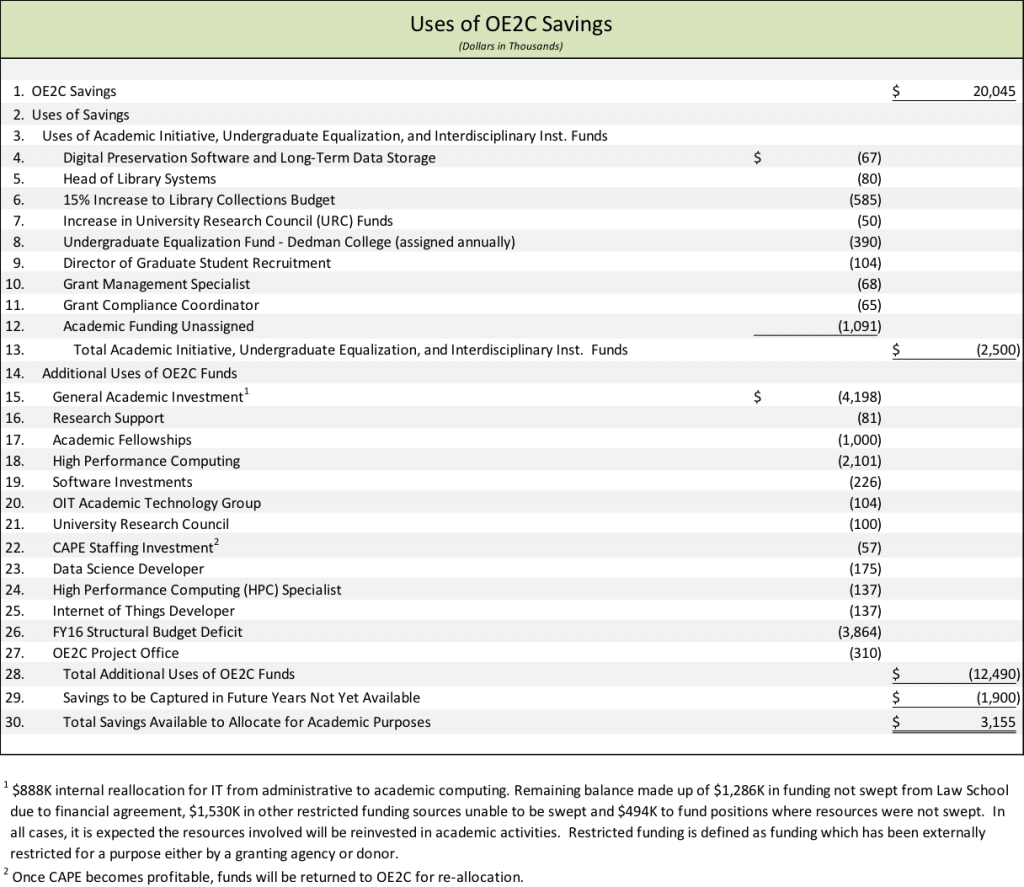
- Budgeted unrestricted positions.
- Counts above are at May 31st of each year.
- Full-time and part-time benefit-eligible staff, faculty administrators and post docs.
- FY16 projections reflect 20 eliminated positions from Finance and 17 from Facilities.
- Goal: Limit any unrestricted staff headcount growth from FY2016 levels. New staff needs should be addressed using existing staff positions.
- Unrestricted funds.
- Includes full-time and part-time staff, faculty administrators and post docs.
- Includes salaries only.
- The salary cost is the actual dollars spent in the ledger adjusted for the employee classification.
- Goal: Limit the growth in unrestricted staff salary costs to annual merit pool allocation levels. For FY 2017 the merit pool is 2%.
Shared Services Staff Counts
The following three charts use Integrated Postsecondary Education Data System (IPEDS) data to compare SMU to itself, schools within our cohort and aspirational schools. Through federal mandatory annual surveys, IPEDS captures information from all universities that receive federal financial assistance in categories that include institutional characteristics, institutional prices, admissions, enrollment, student financial aid, degrees conferred, fiscal resources, libraries, human resources and retention and graduation rates.
- Aspirational: Boston College, Brandeis University, Carnegie Mellon University, Lehigh University, Rensselear Polytechnic Institute, and Rice University.
- Cohorts: Baylor University, Pepperdine University, Syracuse University and Texas Christian University.
- “Other” category in the legend includes: Public Service, Net grant aid to students, Independent operations, O&M, Other expenses.
- Goal: Increase Instruction, Academic Support, and Research spending to more closely reflect our aspirational schools.
- Aspirational: Boston College, Brandeis University, Carnegie Mellon University, Lehigh University, Rensselear Polytechnic Institute, and Rice University.
- Cohorts: Baylor University, Pepperdine University, Syracuse University and Texas Christian University.
- “Other” category in the legend includes: Public Service, Net grant aid to students, Independent operations, O&M, Other expenses.
- Goal: Increase Instruction, Academic Support, and Research spending to more closely reflect our aspirational schools.
- This year-to-year comparison shows two scenarios for FY2015. One showing full actual expense percentages and one showing a recalculation reflecting the exclusion one-time expenses.
- “Other” category in the legend includes: Public Service, Net grant aid to students, Independent operations, O&M, Other expenses.
Metrics – OIT Help Desk and Support
Created to improve operations at SMU and identify savings in administrative costs to reallocate to academic purposes, the Office of Operational Excellence has identified key measurements to track progress towards its mission.
At the beginning of the Operational Excellence for the Second Century (OE2C) project, research revealed that our peers across aspirational universities are spending a greater percentage of funds on the academic mission versus administration costs. To measure SMU’s progress toward achieving a competitive balance of academic and administrative spending through bold initiatives that serve the staff, faculty, and students, the Office of Operational Excellence has identified a set of key metrics.
Below, you’ll find key metrics from OIT including the following Q&A with team leaders.
Why were these particular performance metrics chosen to represent progress toward operational excellence in your area?
We selected a few key metrics that would help capture customer satisfaction or efficiency improvements in OIT.
Percentage of calls answered: As customers are encouraged to contact the IT Help Desk for any request, it is imperative that calls are answered quickly. If customers can’t get through the phone line or abandon the call due to a long wait time, that would indicate a problem with staffing at the front line. Our help desk staff covers a large number of hours, seven days a week. Ensuring that the percentage of calls answered remains high, means that customers are able to reach us consistently for assistance.
Customer Satisfaction: When tickets are closed in our help desk tracking system, a survey is sent on a randomized basis. Customers are encouraged to provide feedback regarding the service they receive. We are monitoring several areas of customer service to ensure we are providing excellent service to the campus community. The customer satisfaction score reflects responses for any ticket in the help desk system—not just those resolved by the help desk. This helps capture the service from the front line all the way to senior IT administrators.
Classroom Support: Rapid response and resolution to classroom technology issues is a critical service to the faculty and students at SMU. We are working on several solutions to help eliminate or drastically reduce the resolution time for these types of issues. The metrics are monitoring progress as these solutions are implemented.
How do these metrics support the work of your OE2C initiative?
The intent of shared services is to provide excellent service to the campus community in a streamlined and efficient way. These metrics provide insight into the quality of service provided and whether or not the campus needs are being met with this new model.
Looking at your performance measures, what findings are most interesting or compelling to you?
We are focused on continual improvement of the service we deliver to campus. These are only a few of the metrics we are monitoring. There is always room for improvement and we are committed to making slight changes daily to serve the campus better. Across OIT there are many areas of focus to deliver a large portfolio of services. Improvements and advancement in infrastructure, application support, project and portfolio management, academic technology and strategic planning, and customer service delivery are all underway. We are striving to ensure that IT is a strategic partner throughout campus—providing both immediate triage and resolution of issues as well as supporting business and academic strategic goals.
Metric – PeopleSoft Customizations
Why were these particular performance metrics chosen to represent progress toward operational excellence in your area?
We chose PeopleSoft customizations primarily because it was a benchmark used within the ERP (Enterprise Resource Planning) System diagnostic OE2C project. Certain customizations (approximately 250) represent code or logic that has diverted from PeopleSoft’s delivered functionality, and must be managed through each upgrade. Business units and OIT are partnering to reduce this count of customizations. It is not a simple task! The business must rewrite processes and procedures, and OIT must examine the change to ensure no unintended side effects are seen.
How do these metrics support the work of your OE2C initiative?
These metrics provide a measure of changes to business process. They also provide an idea of the speed of change that can be absorbed by IT developers, business analysts, and power users who operate the PeopleSoft system on a daily basis. Change requests still come for a variety of reasons (audit, critical errors, etc) and must be addressed. It requires delicate management to focus between the reductions and operations.
Looking at your performance measures, what findings are most interesting or compelling to you?
We have found the customization data compelling because our exploration has resulted in identifying good customizations such as integrations with other applications. For example, an integration allows for a business application to get data from our master system (PeopleSoft). Identifying this measure helps focus on the right reductions.
What are your main areas of focus going forward?
The data for customizations was gathered for the ERP diagnostic, and will now be tracked within a database for easier and more consistent reporting.
We will upgrade the my.SMU (also called Campus Solutions) system to the 9.2 version, and plan to use the opportunity to examine the ~250 customizations we are targeting.
We have also redesigned how we will create integrations going forward. This process allows for non-developers to perform critical integration steps.
IT Operational Metrics Dashboard
- Based on calendar year.
- A significant drop in the number of survey responses after 2013 is attributable to the fact that OIT drastically reduced the amount of surveys it sent out, due to feedback from a focus group that was conducted by HR and OIT.
- The minor drop in overall ratings in 2015 coincides with the shared services organizational design initiative being set in place. Improved ratings can be seen on slide that shows 2016 ratings.
- Goal: To maintain a 90% or higher satisfaction rate.
- Based on calendar year.
- The line for “Resolution within Reasonable Timeframe” is hidden because it follows the exact path (percentages) as “Issue Resolved to satisfaction”.
- Goal: To maintain a 90% or higher satisfaction rate.
Calendar Year
- This metric tracks the rate at which incoming calls are answered without rolling to voice mail.
- The increase in percentage from 2011 to 2012 is potentially attributable to the fact that the voice mail option was removed for incoming help desk calls. This led to calls either being answered or abandoned by caller.
- Goal: To maintain a rate of 95% or higher.
- *Division of Enrollment Services.
- **Comprised of campus departments that are not directly related to or supported by the University’s ERP systems.
- Goal: An increase of e-form implementations, which will create a more efficient workflow.
- Based on calendar year.
- Goal: To reduce the total number of customizations performed on the ERP system.
Metrics – Facilities
Created to improve operations at SMU and identify savings in administrative costs to reallocate to academic purposes, the Office of Operational Excellence has identified key measurements to track progress towards its mission. At the beginning of the Operational Excellence for the Second Century (OE2C) project, research revealed that our peers across aspirational universities are spending a greater percentage of funds on the academic mission versus administration costs.
To measure SMU’s progress toward achieving a competitive balance of academic and administrative spending through bold initiatives that serve the staff, faculty, and students, the Office of Operational Excellence has identified a set of key metrics.
Below, you’ll find key metrics from Facilities including the following Q&A with team leaders.
Why were these particular performance metrics chosen to represent progress toward operational excellence in your area?
Facilities Planning and Management selected performance metrics that demonstrate the holistic approach the department has taken in contributing to the success of the University mission. The metrics address cost reduction, energy savings, improving communication and delivering more efficient solutions to work requests and space allocation. When achieved, all of the metrics provide a benefit to the SMU community and improve the performance of our department.
How do these metrics support the work of your OE2C initiative?
The metrics illustrate the long-term plan for energy cost savings, reduction for the SMU community in time and resources being committed to reporting and maintaining University facilities, and improvement in the resolution of facility work requests. Each of these categories were an impact of the Facilities OE2C initiative.
Looking at your performance measures, what findings are most interesting or compelling to you?
The decrease in days to complete a work request, decrease in number of work requests submitted by faculty and staff, and the increase in Customer Satisfaction Scores are a perfect illustration. Looking at Q4 of 2016, the three metrics together shows a direct correlation between the decrease in time the greater community is spending submitting work requests, the faster those work requests are being resolved and higher satisfaction scores. Following these performance measures allows us to identify what is successful and track the outcome.
What are your main areas of focus going forward?
Facilities Planning and Management will focus on maintaining the energy initiatives set in place for the University, improving work request reporting and resolution, and continuing to improve Facilities Management support for the SMU community.
The Facilities Institutional Metrics Dashboard
- The data presented excludes: RLSH Apartments, Greek Houses, East Campus, Plano Campus & Taos Campus. These buildings are excluded because the square feet for this slide relate only to electricity and natural gas fed from the Central Plant and the multi-stack system in the Mustang Parking Center.
- Energy Use Intensity (EUI) is the measure of how much electricity and natural gas is used per gross square foot per year.
- EPA’s Energy Star indicates that the national median site EUI for a four-year university is 131 kBTU/GSF/Yr.
- Weather will influence energy usage, from unusually hot summers to severe cold winters, and will impact how much energy is used per square foot from year to year.
- Goal: To maintain low energy cost and an EUI that is below the national median for a four-year university.
Historical Energy Cost/GSF – Main Campus on Central Plant/Multistack System
- The data presented excludes: RLSH Apartments, Greek Houses, East Campus, Plano Campus & Taos Campus. These buildings are excluded because the square feet for this slide relate only to electricity and natural gas fed from the Central Plant and the multi-stack system in the Mustang Parking Center.
- Weather will influence energy usage, from unusually hot summers to severe cold winters and will impact how much energy is used per square foot from year to year.
- The increase in GSF from 2014 to 2015 is attributable to the new residential commons, Arnold dining, and the 800-space parking center being added.
- Goal: To maintain low energy cost
- The data presented excludes: RLSH Apartments, Greek Houses, Tennis Courts, University Data Center, East Campus, Plano Campus & Taos Campus. These are excluded because the square feet for this slide specifically relate to water fed from the three water meters for the main campus.
- The high water usage during fiscal years 2012 and 2013 is attributable to a combination of unusually high temperatures and low levels of annual precipitation.
- Goal: To maintain water usage below 50 gallons per gross square foot per year.
Historical Water Cost and Usage – Main Campus
- The data presented excludes: RLSH Apartments, Greek Houses, Tennis Courts, University Data Center, East Campus, Plano Campus & Taos Campus. These are excluded because the square feet for this slide specifically relate to water fed from the three water meters for the main campus.
- The increase in GSF from 2014 to 2015 is attributable to the new residential commons, Arnold dining, and the 800-space parking center being added.
- The high water usage during fiscal years 2012 and 2013 is attributable to a combination of unusually high temperatures and low levels of annual precipitation.
- Goal: To maintain water usage below 50 gallons per gross square foot per year.
- Precipitation data is collected from the onsite irrigation management system, Maxicom System, located at Ford Stadium. In the near future, we will transition from collecting precipitation data onsite to obtaining the data from the National Oceanic and Atmospheric Administration (NOAA) weather station at Love Field Airport.
- Weather conditions will affect the main quad’s water usage, in that, during seasons of drought, more water will be required. Conversely, during seasons of above average precipitation, less water will be required to irrigate the main quad. Therefore, the goal to reduce usage is set at a range in order to accommodate the effects of weather. In addition, SMU requires that the main quad remain green year round, which is also a contributing factor to water usage.
- Conversion from rotary type irrigation sprinkler heads to sprayer irrigation sprinkler heads for reduction of water consumption in the Main Quad to be completed in August 2016.
- Goal: To reduce main quad irrigation to a range between 4.9 – 5.2 million gallons/fiscal year based upon FY2014 usage of 6.4 million gallons of water.
- Includes all in-scope and out-of-scope work orders.
- Excluded: Preventive Maintenance Work orders and SMU in Taos.
- Facilities Managers started submitting self identified work requests in the computerized maintenance management system on March 1, 2016.
- Goal: To continually see a decline in customer requested work orders to attain a level not to exceed 50%.
- Includes all in-scope and out-of-scope work orders.
- Excluded: Preventive Maintenance Work orders and SMU in Taos.
- Facilities Managers started submitting self identified work requests in the computerized maintenance management system on March 1, 2016.
- Goal: To continually see a decline in customer requested work orders to attain a level not to exceed 50%.
- Includes all in-scope and out-of-scope work orders.
- *New CMMS System rolled out (TMA) in 2015Q1.
- **Procedural change in the beginning of 2015Q3 to close open work orders.
- ***Procedural change in the beginning of 2016Q2 to allow technicians to close work orders in real time.
- Goal: To complete corrective work orders within an average of 10 calendar days.
- Includes all in-scope and out-of-scope work orders.
- Effective May 1, 2016, surveys issued on all non-self-identified work orders. From June 1, 2015 – April 30, 2016 surveys issued on every 3rd non-self-identified work order.
- Goal: To maintain a customer average score between Excellent (1) and Good (2).
- Gross square footage (GSF) includes attic space. Does not include the following: Plano, Taos, grounds assets, single family houses, apartments, President’s house, Sigma Chi, commercial and retail properties, 80% of Johnson Square, surface parking lots, Athletic Courts, Athletic Fields, Recreational Courts and Recreational Field.
- Information for faculty/staff FTE and student FTE cited from SMU’s Office of Institutional Research website. Information for GSF provided by SMU’s Office of Facilities Planning and Management.
- Target areas for the two categories are based on benchmarking against peer institutions. Calculations were made using information found on Vanderbilt’s and TCU’s websites, as follows: (1) Vanderbilt (Aspirant) – 6,900,000 SF, 4,075 faculty/staff and 12,605 students for the fall of 2015. This equates to 547 SF per student FTE and 1,693 SF per faculty/staff FTE, and (2) TCU (Cohort) – 4,476,119 SF, 2,206 faculty/staff and 10,143 students for the fall of 2015. This equates to 441 SF per student FTE and 2,029 SF per faculty/staff FTE.
- Goal: To maintain a square footage ratio per student FTE and per faculty/staff FTE within the total square footage ratios of SMU’s cohort and aspirational institutions, TCU and Vanderbilt, respectively.
Metrics – Finance
Created to improve operations at SMU and identify savings in administrative costs to reallocate to academic purposes, the Office of Operational Excellence has identified key measurements to track progress towards its mission. At the beginning of the Operational Excellence for the Second Century (OE2C) project, research revealed that our peers across aspirational universities are spending a greater percentage of funds on the academic mission versus administration costs.
To measure SMU’s progress toward achieving a competitive balance of academic and administrative spending through bold initiatives that serve the staff, faculty, and students, the Office of Operational Excellence has identified a set of key metrics.
Below, you’ll find key metrics from Finance including the following Q&A with team leaders.
Why were these particular performance metrics chosen to represent progress toward operational excellence in your area?
Overall we felt these metrics best represented areas that would give us guidance to improve the operations of the area, e.g., we wanted to analyze the time between an invoice date and the date of payment in order to identify opportunities to increase vendor satisfaction by processing payments within payment terms.
How do these metrics support the work of your OE2C initiative?
The data suggests that a delay in payments is primarily the result of invoices not being submitted to us quickly enough to allow for timely payment or utilization of vendor discounts. We will use that information to explore options for receiving invoices centrally.
Looking at your performance measures, what findings are most interesting or compelling to you?
The delay in payments to vendors is primarily due to the time it takes an approved invoice to be sent to Accounts Payable (A/P) for processing and payment. The time for processing approved invoices received by A/P has been less than 10 days, which is the Service Level Agreement (SLA) established for the prior year.
What are your main areas of focus going forward?
We want to identify a streamlined process to centrally receive invoices and implement an electronic solution for approval and upload into the A/P system. We also have implemented a new SLA of processing approved invoices within 5 days of receipt by A/P. We are working with the Facilities team to implement an electronic upload of invoices via the e-Builder system, which will result in more efficient processing.
The Finance Institutional Metrics Dashboard
- Goal: To reduce the number of days between invoice date and receipt of invoice in A/P.
- Goal: To reduce the number of days between receipt of invoice in A/P and date invoice entered into system.
- Goal: To reduce the number of days between invoice entered in A/P and payment date.
- Goal: To reduce the number of days between invoice date and payment date.
- Calculation is based on all regular vouchers greater than $3,000 and grants greater than $5,000.
- As more and more vouchers have corresponding purchase orders, efficiency will rise due to the fact that incoming invoices will be processed without spending valuable time figuring out who ordered the products or services, obtaining approval and account coding.
- Goal: To increase the percentage of vouchers with purchase orders.
- Journal entry capability was removed from users in various phases, which did not occur at regular intervals. Therefore, the dates above do not follow a particular pattern.
- Goal: To reduce the number of manual journal entries and to increase controls and data input accuracy and consistency.
- Fiscal year-to-year comparison.
- Since the elimination of cross charges, there has been a reduction of several thousand JE lines over last year. Finance estimates that there will be several thousand more JE lines that will be eliminated beginning in June 2016, when Facilities reduces volume from their department.
- The spike that occurs in May of each year is due to fiscal year end journal entries.
- Goal: To reduce the number of manual journal entries processed.
Metrics – Contracts
Created to improve operations at SMU and identify savings in administrative costs to reallocate to academic purposes, the Office of Operational Excellence has identified key measurements to track progress towards its mission. At the beginning of the Operational Excellence for the Second Century (OE2C) project, research revealed that our peers across aspirational universities are spending a greater percentage of funds on the academic mission versus administration costs.
To measure SMU’s progress toward achieving a competitive balance of academic and administrative spending through bold initiatives that serve the staff, faculty, and students, the Office of Operational Excellence has identified a set of key metrics.
Below, you’ll find key metrics from Contracts including the following Q&A with team leaders.
Why were these particular performance metrics chosen to represent progress toward operational excellence in your area?
The goal of the Contract Administration Initiative was to align risk tolerance and business need to simplify the contract process University-wide. During the diagnostic phase of the initiative, the team conducted 21 individual interviews, 5 group/department interviews, 3 focus group interviews and 3 end user/faculty group interviews across campus. The length of time it took to process a contract was the biggest challenge identified campus-wide. The general consensus was the contract process needed to be more nimble, efficient and faster. The goal was to also decrease the number of contracts going to the Office of Legal Affairs and Office of Risk Management so they can focus on more high-risk issues. To achieve the goal of decreasing the number of contracts going to OLA and Risk, we needed to increase the number of standard contracts used across campus and increase the number of contracts that could be handled through Purchasing on a Purchase Order.
How do these metrics support the work of your OE2C initiative?
Slide 1 reflects the following:
- The number of standard contracts being used across campus.
- The number of non-standard contracts being used across campus.
- The decreased number of contracts requiring legal and risk review (i.e. standard contracts do not require legal and/or risk review)
Slide 2 reflects the following:
- The number of days it takes to process non-standard contracts (i.e. require legal, risk and other resource review)
- The number of days it takes to process standard contracts (note the benefit of using standard contracts)
Slide 3 reflects the following:
- The average number of days it takes for contracts to be reviewed by the various resource groups across campus. (note all contracts reviewed by legal, OIT and risk are all non-standard contracts)
Slide 4 reflects the following:
- The number of open standard and non-standard contracts open at the end of each month.
Slide 5 reflects the following:
- The average number of days standard contracts and non-standard contracts remain open at the end of each month. (note the benefit of using standard contracts)
Slide 6 reflects the following:
- The average number of days contracts have been opened by the resource group.
Slide 7 reflects the following:
- The number of contracts that were presented to the new contract administration process which were moved to the purchasing process.
Looking at your performance measures, what findings are most interesting or compelling to you?
The low number of days it takes to process standard contracts across campus and the volume of those contracts.
Through this initiative, the number of contracts going for Legal review has decreased by 90%.
1301 Standard Contracts
188 Non-Standard Contracts to legal affairs
393 Contracts to Purchasing
1882 Total Contracts
188 is 9.989 % of 1882
Previously, OLA would have received ALL of these contracts.
What are your main areas of focus going forward?
Continued training of the contract leads with the assistance of Legal Affairs, Risk Management, Human Resources, OIT, etc. With training by these various resource groups in their areas of expertise, we can increase the proficiencies of the contract leads, who are the first set of eyes on non-standard contracts, and help them determine which resources groups need to review which contracts.
Any other thoughts you would like to share?
This progress is reflective of the hard work and determination the Contract Administration Team put forth in designing and implementing the new process. The progress is also reflective of the 30 contract leads embedded within the schools and departments across the campus. The contract leads have worked tirelessly to put business practices together within their schools/departments, have attended numerous training sessions and have taken on the challenge of learning and using the new software that all contracts are now processed through. The numbers also represent the University’s implementation of DocuSign, which has significantly decreased the number of days it previously took to pass hard copies of contracts around campus to sign. The President, Vice Presidents and others with signature authority have embraced the use of DocuSign, and this has been a successful part of this initiative.
The Contracts Institutional Metrics Dashboard
- Completed contracts reflect all contracts completed since the new contract administration process was implemented on April 15, 2015. Beginning in September 2015, SMU went live with Selectica’s Contracts Lifecycle Management software and contracts are now being reported with Selectica’s reporting feature. Prior to Selectica launching, contracts were tracked manually on spreadsheets.
- SMU Resources are departments and/or individuals with expertise in various areas of contract management.
- The Office of Legal Affairs (OLA) has prepared standard forms to be used across campus. If there are no special requirements or deviations from accepted OLA language, contracts can be processed for signature without review by SMU resources.
- Non-Standard contracts require review by appropriate SMU resources as necessary.
- This data does not include employment, endowment, grants and purchase orders which are outside of the new contract administration process.
- Completed Contracts reflect all contracts completed since the new contract administration process was implemented on April 15, 2015. Beginning in September 2015, SMU went live with Selectica’s Contracts Lifecycle Management software and contracts are now being reported with Selectica’s reporting feature. Prior to Selectica launching, contracts were tracked manually on spreadsheets.
- SMU resources are departments and/or individuals with expertise in various areas of contract management.
- The Office of Legal Affairs has prepared standard forms to be used across campus. If there are no special requirements or deviations from the accepted OLA language, contracts can be processed for signature without review by SMU resources.
- Non-Standard contracts require review by appropriate SMU resources as necessary.
- This data does not include employment, endowment, grants and purchase orders which are outside of the new contract administration process.
- Completed contracts reflect all contracts completed since the new contract administration process was implemented on April 15, 2015. Beginning in September 2015, SMU went live with Selectica’s Contracts Lifecycle Management software and contracts are now being reported with Selectica’s reporting feature. Prior to Selectica launching, contracts were tracked manually on spreadsheets.
- SMU resources are departments and/or individuals with expertise in various areas of contract management.
- Number of days in each of the SMU resources group reflects the time from the date a contract request was made to the resource groupthrough the date of approval of the resources group. At any point a contract is with an SMU resource group, the time period can include but not limited to review by vendor’s lawyers and business personnel and review by personnel in the originating SMU Department, Office of Information Technology, Office of Risk Management, Office of Legal Affairs and Contracts office.
- Open Contracts reflect the total number of open contracts in the new contract administration process.
- Open contracts in queue reflect the number of days on average for the remaining contracts that have not been completed according to their contract category.
- The open contracts could be in various stages of approval within the University or with the vendor or vendor’s counsel.
- Open contracts in queue reflect the number of days on average the remaining open contracts have been open according to the resource group.
- Number of days in each of the SMU resource groups reflects the time from the date a contract request was made to the resource group through the date of approval of the resource group. At any point a contract is with an SMU resource group, the time period can include but not limited to review by the vendor’s lawyers and business personnel and review by personnel in the originating SMU department, Office of Information technology, Office of Risk management, Office of Legal Affairs and Contract Office.
- With changes in the contracts administration process and keeping in line with the procurement initiative and the travel policy, contracts which formerly went through the contracting process have now been moved to purchasing. Examples of these include but are not limited to contracts for hotels, catering, events, media, transportation, entertainment, printing and promotional items.
- As the Contract Leads receive additional training, they will become more familiar with what needs to be processed through purchasing versus the contract process.
- *The sudden increase in November 2015 is attributable to the fact that a number of contract leads were transferred to other shared services centers. The move necessitated the need for new contract leads to be identified and trained. The process took most of October and part of November.
- The increase in May 2016 is likely attributable to graduations and events, which may have made contract leads unsure if items should
be a PO or contract.
Metrics – Graduate Application Processing
Created to improve operations at SMU and identify savings in administrative costs to reallocate to academic purposes, the Office of Operational Excellence has identified key measurements to track progress towards its mission. At the beginning of the Operational Excellence for the Second Century (OE2C) project, research revealed that our peers across aspirational universities are spending a greater percentage of funds on the academic mission versus administration costs.
To measure SMU’s progress toward achieving a competitive balance of academic and administrative spending through bold initiatives that serve the staff, faculty, and students, the Office of Operational Excellence has identified a set of key metrics.
Graduate Application Processing is tracking the number of applications received and processed for Lyle School of Engineering.
The Graduate Application Processing Institutional Metrics Dashboard
- This metric reflects Lyle School of Engineering numbers only. The reason is because Lyle is the only school utilizing shared services that processes incoming applications on a rolling basis. Therefore, this is the ideal scenario to show that the new SLATE system has had a significant positive impact in the efficiency of processing graduate applications.
Metrics – Purchasing
Created to improve operations at SMU and identify savings in administrative costs to reallocate to academic purposes, the Office of Operational Excellence has identified key measurements to track progress towards its mission. At the beginning of the Operational Excellence for the Second Century (OE2C) project, research revealed that our peers across aspirational universities are spending a greater percentage of funds on the academic mission versus administration costs.
To measure SMU’s progress toward achieving a competitive balance of academic and administrative spending through bold initiatives that serve the staff, faculty, and students, the Office of Operational Excellence has identified a set of key metrics.
The Purchasing Department is tracking numerous metrics related to OE2C initiatives, including travel, cell phones, printers, and office supplies.
The Purchasing Institutional Metrics Dashboard
Travel Metrics
Goal: To achieve a score of 4 or above.
- American Airlines is reviewing data to prepare possible master agreement for discounts/fee reductions. Proposal is anticipated July 2016.
- Upon reviewing a full year of data (FY2016), SMU’s Purchasing Department has made contact with the national accounts programs for Marriott and Hilton. The Purchasing Department is in the process of scheduling meetings and/or webinars in late July 2016 to discuss the potential to negotiate University-wide discounts.
- “Other” category represents approximately 550 independent and small group hotels.
- SMU’s Purchasing Department has analyzed the spend data for FY2016 and is in the process of price negotiations with Enterprise Holdings, which is the parent company of National and Enterprise. Contract pricing will cover both National and Enterprise. The Director of Purchasing plans to present an exclusive provider recommendation to the VP of Business and Finance in August 2016.
Cell Phones Metrics
- In April 2016, a few coaches left SMU and a few new coaches arrived in May 2016, which accounts for the drop in April and subsequent increase in May.
- Goal: To support minimal number of SMU provided cell phones.
- The amounts spent in June FY2015 were less than the two months following due to refunds received for cell phones turned in.
- Occasional increase in monthly expense may indicate purchase of equipment and/or data overage charges.
- Goal: To decrease expense as much as possible.
Printers Metrics
- The importance of reducing machine count is primarily due to future replacement costs. For example, the average life of a personal printer is 8 years. Therefore, 12.5% of the printers need to be replaced annually. By May 2016, we have reduced the number of printers by 1298, which equates to approximately 162 printers that do not need to be replaced annually. If, for example, the average replacement cost is $300 per unit, this would translate to almost $49,000 of annual cost avoidance. Once the machine count is reduced to 1000, the annual cost avoidance figure will be approximately $56,000.
- Ongoing review and evaluation of the campus print environment will allow SMU to reduce the fleet to 1000 supported printers.
- SMU covers toner, paper, supplies and maintenance cost for supported printers.
- Goal: To reach 1000 supported units. This figure was determined by assigning an approximate 2.5:1 ratio of SMU employees to printer. It is estimated that the goal of reducing printers to 1000 will be reached by September 2016.
- Effective June 1, 2015, SMU entered into a Print Management Services agreement with a preferred vendor (Imagenet).
- Savings are calculated by comparing baseline fiscal year 2014 to each subsequent year.
- Figures for fiscal years 2014 and 2015 are estimates, as copier and printer equipment and supplies were sourced and purchased from multiple vendors and through various processes, making it impractical to track actual expenses.
- Goal: To continue to realize cost savings associated with printing and copy costs.
Office Supplies Metrics
- This metric shows that the organization grants purchasing rights to a limited number of employees to ensure that office supplies are purchased through larger orders, which gives rise to purchase discounts when the order average size is over $275.
- Goal: To maintain the target number of authorized users and avoid having the number increase.
- Average order size over $275 allows SMU to have the best pricing and a 1% discount, which is displayed in the table below the graph.
- The 1% discount is taken off each order and is reflected on the monthly Staples invoice.
- The benefit of the discount is allocated to the budget orgs that placed the corresponding orders.
- Goal: To maintain an average order size of $275 and above, in order to benefit from this discount.
- Prompt pay was first achieved with the November 2015 invoice.
- This discount type is generally taken at time of payment.
- The benefit of the discount is allocated to the budget orgs that placed the corresponding orders.
- Goal: To receive the 2% discount on every invoice by paying the Staples invoices within the discount period.
- SMU receives a 1% rebate, in the form of a check, at the end of each contract year, based on total spend.
- As a result of SMU’s contract with Staples, SMU benefits from discounted pricing ranging from 5% to 75% off retail.
- Contract year is April 1 though March 31.
- The rebate is allocated to the budget orgs that placed the corresponding orders.
- Staples Core is a list of approximately 400 items that have the deepest discount available. Items are identified as “On Contract” in the online shopping site.
- In its efforts to maximize the core items savings, the Purchasing Department works with Staples on a quarterly basis to adjust core items list. In addition, Authorized Users and shoppers will be informed on a regular basis, as determined by the Director of Purchasing, of any updates to the core items listing, as well as of the importance of purchasing items that are on the list.
- To demonstrate the impact of core vs. non-core purchasing, a small sampling of heavily purchased items has been included in the following table:

- Goal: To increase the percent of core purchases to realize the most savings. A target of 85% was set per Staples recommended best practices.
See more metrics in the coming weeks on our website or by subscribing to Operational Excellence’s email digest.




